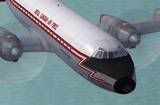Post by aerofoto - HJG Admin on Oct 29, 2012 3:21:12 GMT
"ECHOES OF AN ERA" (PART 1)
Gone now, but, by no means forgotten. The origins of New Zealands SEA BEE AIR .... an amphibious airline that was based at Aucklands downtown waterfront between the mid 1970's and early early 1990's .... may be traced back to the formation of AMPHIBIAN AIRWAYS at Invercargill, in the South Island of New Zealand.
AMPHIBIAN AIRWAYS was founded, during 1949, by a small group of New Zealand pioneer aviators .... Fred ADAMS, Arthur DUTHIE, Harry ENGLISH, and Arthur HAMILTON .... in company with a syndicate of Southland businessmen/investors .... with the intention of forming an airline to fly primariliy from Invercargill .... across the Fauveaux Straight .... to New Zealands southernmost community on Stewart Island.
The absence of any airstrip on Stewart Island, at the time, but, an abundance of fiords, lakes, and other coastal waterways littered throughout New Zealands beautiful Southland region, obviously, favoured marine or amphibious type aircraft for this venture.
A GRUMMAN G44-A WIDGEON .... which had been operated in New Guinea since 1946 .... was located and acquired from the AUSTRALASIAN PETROLEUM CORPORATION/VACUUM OIL COMPANY, based in Sydney, Australia. and then imported/shipped to New Zealand, during December 1950, to become ZK-AVM (ex VH-AZO).
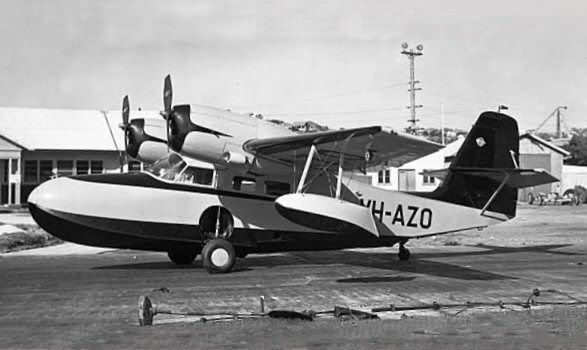
Grumman G44-A Widgeon VH-AZO in Australasian petroleum Corporation livery circa 1949. Photo: Mr WIDGEON collection.
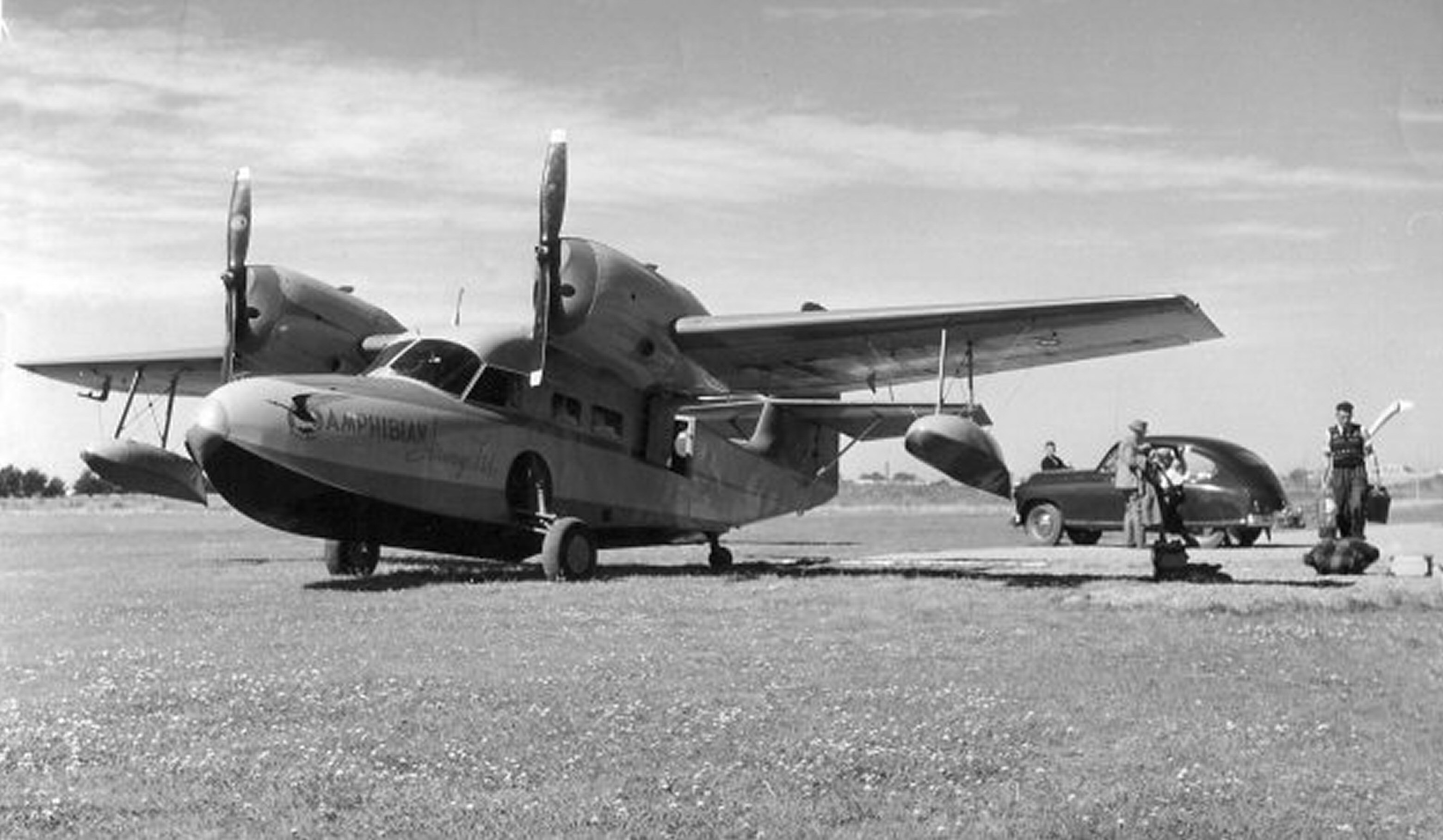
Grumman G44-A Widgeon ZK-AVM in Amphibian Airways livery during 1951. Photo: Ed COATES collection.
G44-A WIDGEON C/N # 1466 ZK-AVM - KNOWN HISTORY
Built as a civil WIDGEON, 1946, NC86640
Sold to AUSTRALASIAN PETROLEUM CORPORATION/VACUUM OIL, December 1946, VH-AZO
Sold to AMPHIBIAN AIRWAYS, Invercargill, New Zealand, December 1950, ZK-AVM
Inherited by NZ TOURIST AIR TRAVEL, Auckland New Zealand, August 4th 1961, ZK-AVM
Converted to SUPER WIDGEON (260 HP Continental IO-470-D engines) 1965
Inherited by MOUNT COOK AIRLINES, Auckland New Zealand, December 31st 1967, ZK-AVM
Leased to STEWART ISLAND AIRWAYS, Invercargill, New Zealand, May 1st 1976, ZK-AVM
STEWART ISLAND AIRWAYS, Invercargill, New Zealand, September 3rd 1976, ZK-AVM
Inherited by SEA BEE AIR, Auckland, New Zealand, October 22nd 1976, ZK-AVM
Returned to SEA BEE AIR, Auckland, New Zealand, November 1976, ZK-AVM
Sold to Peter WALKER, Sydeney, Australia, July 1979, ZK-AVM/AT373N
Loaned to SEA BEE AIR/FIJI AIR, Suva, Fiji, August 1979, ZK-AVM/AT373N
Returned to SEA BEE AIR/Peter WALKER, Auckland, New Zealand, July 1981, ZK-AVM/AT373N
Withdrawn from service and stored, Auckland, New Zealand, July 1981, ZK-AVM
Sold to CORAL WINGS, Cairns, Australia, May 1987, VH-WET
Sold to HASSIM EXPDITIONS & ADVENTURES, Papua , New Guinea, April 1994, P2-WET
Sold to Owen HARNISH, Auckland, New Zealand, July 1st, 1996, ZK-AVM
Leased to SALT AIR, Paihia, Bay Of Islands, New Zealand, ZK-AVM - date unknown
Withdrawn from service and stored at Auckland, New Zealand, 2000, ZK-AVM
Sold to Warren DENHOLM/AVSEPCS LTD, Auckland, New Zealand, May 2012, ZK-AVM
CURRENTLY STORED AT ARDMORE AERODROME, SOUTH AUCKLAND, NEW ZEALAND
GRUMMAN G44/A WIDGEON TECHNICAL SPECIFICATIONS - ORIGINAL CIVIL CONFIGURATION
Length = 31fT i IN
Wing Span = 40 FT
Power Plant = 2X Ranger L-440C-5 engines rated at 200 HP
Weight = 4,500 LBS MGTOW
PAX Capacity = 4-5 (plus 1X pilot)
Range = 800 NM
Speed = 150 KTS (max) - 130 KTS (typical cruise)
Type = Light amphibious transport with fixed/non-retractable wingtip floats
GRUMMAN JRF-2 TECHNICAL SPECIFICATIONS - ORIGINAL MILITARY CONFIGURATION
Same as above except in regard to the following details ....
Type = Light amphibious utility/transport. Instrument trainer. Coastal patrol flying boat
Armament = 1X 200 LB depth charge - anti-submarine patrol
On August 1st 1942 a US COAST GUARD JRF-1 (V212) was credited for depth-charging and sinking the German submarine U-166 off the Mississippi Delta, in the Gulf Of Mexico .... although more recent evidence suggests this may in fact have been U-171 and that the aircrafts attack "did not" result in a sinking of this submarine. The latter has gained credibility since the confirmed wreck of U-166 was discovered, recently, by BP/SHELL OIL .... some 100 miles further south of the aircrafts reported attack position and at a locality which is also consistent with the USS PC-566 having reported attacking a German submarine on July 31st 1942. The official war diary from the U-171 also, apparently, records it having been attacked, by air, near the WIDGEON's reported attack position on August 1st 1942 but without any serious damage having been inflicted.
This particular aircraft was built as a civil WIDGEON, during 1946, and became the very first of its type to be operated in New Zealand .... and was also the only one of its type to ever see service in Australia.
After reassembly, flight testing, and pilot training .... a number of pre-inaugural services were operated throughout the Southland region, between January and February of 1951, with the aircraft then commencing charter services for AMPHIBIAN AIRWAYS on March 16th 1951 .... followed by non-sked services between Invervargill and Stewart Island from October 1st 1951.
Despite initial reservations as to the suitability of these aircraft for operations within an environment as challenging as that imposed by the Southland geography and its associated weather conditions, as well as their practicality for airline type operations too, the WIDGEON quickly proved its unique versatility, and dependability, and a 2nd GRUMMAN G44 WIDGEON, ZK-BAY (ex N9326H), was acquired from the USA during 1952 ....
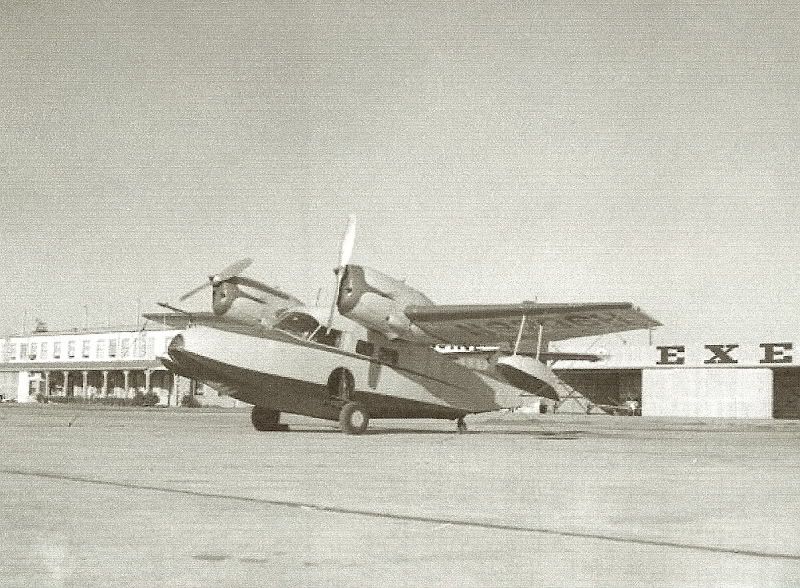
Grumman G44 Widgeon N9326H in private US ownership circa 1950. Photo: Mr WIDGEON collection.
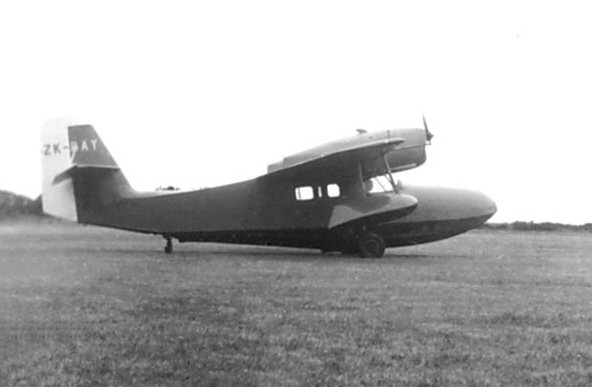
Amphibian Airways Grumman G44 Widgeon ZK-BAY shortly after entering the New Zealand civil air register during 1952. Photo: Private Collection.

Amphibian Airways Grumman G44 Widgeon ZK-BAY at Stewart Island during 1955. Photo: Steve LOWE/3RD LEVEL NZ collection.
J4F-2/G44 WIDGEON C/N # 1362 ZK-BAY - KNOWN HISTORY
Built as a J4F-2, 1944
Delivered to US NAVY, 1944, BUA 37732
Transferred to ROYAL NAVY (GOSLING 1), 1944, FP462
Returned to US NAVY, October 1945, BUA - unknown
Converted for civil use (G44 WIDGEON) N9236H - date unknown
Other details prior to 1952 - unknown
Sold to AMPHIBIAN AIRWAYS, Invercargill, New Zealand, 1952, ZK-BAY
Inherited by NZ TOURIST AIR TRAVEL, Auckland New Zealand, August 4th 1961, ZK-BAY
Converted to SUPER WIDGEON (260 HP Continenal IO-470-D engines) 1965
Inherited by MOUNT COOK AIRLINES, Auckland New Zealand, December 31st 1967, ZK-BAY
WRITTEN OFF NEAR BROWNS ISLAND, WAITEMATA HARBOUR, AUCKLAND, NEW ZEALAND, DECEMBER 24TH 1970
ZK-BAY was an early production former military aircraft that saw service from 1944 .... as US NAVY (BUA 37732) J4F-2. It was also one of 15 of the type that were transferred to the ROYAL NAVY (FP462) under the US/UK Lend-Lease program to be operated by RAF COASTAL COMMAND .... as GOSLING 1 aircraft .... before returning to the US NAVY after WW2 and later being converted for civil use.
The GRUMMAN G44 WIDGEON (the earliest/original production model) and the GRUMMAN G44-A WIDGEON (the later production/modified model) both varied .... principally in regard to the aircrafts lower hull/keel shape.
For almost 10 years AMPHIBIAN AIRWAYS' blue/yellow liveried GRUMMAN WIDGEON's struggled to maintain the airlines non-sked/PAX air services between Invercargill and Stewart Island; Coastal service/supply runs (to the manned lighthouse and Puysegur Point near Presevgation Inlet at the southernmost tip of the Fiordland coastline, and fishing vessels at sea), along with occasional air ambulance mercy flights; And charters (fishing/hunting expeditions in particular) into remote and otherwise inaccessible locations throughout the natural and unspoiled Fiordland (National Park) and Southern Lakes districts of the expansive and rugged southwestern region of New Zealands South Island (Lakes Poteriteri, Hauroko, Monowai, Manapouri, Te Anau, and occasionally Lake Wakatipu/Queenstown, and most of the fiords and sounds along the Fiordland coastline between Puysegur Point and Milford Sound all being serviced) and to Stewart Island .... most of which were advertised/billed as "Unusual Holidays" and "Great Southern Adventures".
An impression of the isolation, remoteness, and inaccessibility associated with parts of this region may be realised by the fact that, during its early operational years, the airline even discovered a previously uncharted Southland lake ("Lake Monk" .... named for the airlines foundation pilot captain Jim MONK) and which, apart from becomming New Zealands first ever amphibious air operator, is possibly its only other major claim to fame.
Although the airlines services proved to be quite practical .... as well as very unique within New Zealand at the time also .... the operations of AMPHIBIAN AIRWAYS were never entirely successful/properous. Despite providing an essential air link between Stewart Island and the mainland .... the demand for its services generally peaked only during the summer months of each year, but, were not sufficiently consistent throughout the remaining off-season months of each year .... a situation that was unaided by the fact that Southland, during this period, was also a region of commercial decline. These factors starved the airline of growth potential .... of the type necessary to encourage/justify ongoing financial support by its shareholders seeking a return for their investment in the airline. After several years of more-or-less static activity, consecutive losses .... and subsequent consolidation .... New Zealands first ever commercial amphibious airline venture finally accepted a takeover bid from the Auckland based NZ TOURIST AIR TRAVEL, on July 25th 1961, and both airlines formally merged on August 4th 1961.
NZ TOURIST AIR TRAVEL was founded during 1954 .... as the result of a disagreement among directors of the Invercarill based AMPHIBIAN AIRWAYS. More enterprising and visionary members of the South Island airlines board had realised, from a very early stage, the limited growth prospect available to their airline with services based solely within the Souththland region, and were keen to expand operations into New Zealands North Island .... to exploit the, obviously, greater potential available within the comparatively more prosperos north, and by using GRUMMAN WIFGEON aircraft to operate similar amphibious air services, from Auckland to the scattered island communities of the similarly remote and expansive Hauraki Gulf region. This aspiration, innevitably, resulted in a clash of philosophies among the southern airlines board members ("Auckland can look after itself"[/b] being the prevailing attitude) .... and which resulted in co-director Harry ENGLISH, in company with a number of like-minded investors, then severing ties with AMPHIBIAN AIRWAYS in order to persue, independently, the prospect of such an amphibious air service being established within New Zealands North Island.
A GRUMMAN G-44 WIDGEON was located and acquired from REGIE AERIEN INTERINSULAIRE (renamed RESAU AERIEN INTERINSULAIRE during 1958 and having also operated under the AIR TAHITI brand), based in Papeete, Tahiti, French Polynesia .... and then imported/Shipped to New Zealand, during November 1954, to become ZK-BGQ (ex F-OAGX).

Philatelic artwork by J.L.RAQUET comemorating the devlopment of aviation in French Polynesia with this extremly rare image of Grumman G44 Widgeon F-OAGX in RAI livery prior to its sale to NZTAT as ZK-BGQ

Grumman G44 Widgeon ZK-BGQ in its original NZTAT livery shortly after entering service during 1955. Photo: Mr WIDGEON collection.
J4F-2/G44 WIDGEON C/N # 1356 ZK-BGQ - KNOWN HISTORY
Built as a J4F-2, 1944
Delivered to US NAVY, 1944, BUA 37761
Transferred to US COAST GUARD, 7761 - date unknown
Converted for civil use (G44 WIDGEON) June 26th 1947, NC67193
Other details prior to 1949 - unknown
Sold to REGIE AERIEN INTERINSULAIRE, Papeete, Tahiti, French Polynesia, March 1949
Sold to NZ TOURIST AIR TRAVEL, Auckland, New Zealand, November 1954, ZK-BGQ
Converted to SUPER WIDGEON (260 HP Continenal IO-470-D engines) 1965
Inherited by MOUNT COOK AIRLINES, Auckland New Zealand, December 31st 1967, ZK-BGQ
Inherited by SEA BEE AIR, Auckland, New Zealand, October 22nd 1976, ZK-BGQ
Leased to STEWART ISLAND AIRWAYS, Invercargill, New Zealand, November 1976, ZK-BGQ
Returned to SEA BEE AIR, Auckland, New Zealand, March 1977, ZK-BGQ
WRITTEN OFF AT KELLYS BAY, KAIPARA HARBOUR, NORTH AUCKLAND, NEW ZEALAND, JANUARY 21ST 1980
This particular aircraft became the very first of the type to be operated by NZ TOURIST AIR TRAVEL. It too had been a former US NAVY (BUA 37761 .... later registered to the US COAST GUARD as 7761) J4F-2 aircraft from 1944 and prior to being converted for civil use after WW2. It was also the very first aircraft to be operated by RAI .... having entered service with the airline on March 14th 1949 .... to operate interisland services between Tahiti , Moorea, Tetiaroa, Huahine, Raiatea, Bora Bora, Tupai, and Maupiti .... being among the most frequently serviced destinations .... in addition to charters to the Australes, Gambier, Tuamotu, and Marquesas archipeligos of French Polynesia .... and also, occasionally, flying as far west as Aitutaki, in the Cook Islands, in order to connect with NZNAC/TEAL services to Auckland, New Zealand).
Technical assistance to the fledgling new airline was provided by TEAL (now AIR NEW ZEALAND) whom, at the time, still operated SHORTS SOLENT flying boats from Aucklands Waitemata Harbour .... and which it used to service its famous Coral Route through the islands of Polynesia (Fiji, Western Samoa, the Cook Islands, and Tahiti). These were the days before Auckland International Airport had ever been developed from the existing Mangere Aerodrome .... and also before Aucklands Whenuapai Airport (now RNZAF Base Whenuapai) had been developed into an air terminal of any major regional significance.
The overhaul of GRUMMAN WIDGEON ZK-BGQ took much longer to complete and also became a considerably more expensive proposition than was anticipated. Given the very poor state of its airframe .... after an apparently hard life operating within the islands of French Polynesia (the aircraft was, apparently, little more than a corroded wreck .... in the oppinion of some TEAL engineers), what was, originally, intended to have been a mere overhaul, recertification, and then service re-entry escalated into a major time and resource consuming total airframe rebuild. Upon its reassembly, flight testing, crew training, and delivery to NZ TOURIST AIR TRAVEL on May 2nd 1955 .... the WIDGEON then operated a number of pre-inaugural and proving flights throughout the Auckland and Hauraki Gulf region (in the words of the airlines chief pilot and general manager captain Fred LADD .... "given such a great abundance of harbours, bays, beaches, coves, lakes, and islands located throughout the Auckland, Hauraki Gulf, and Northland reguions, and before we ever had any idea as to where we actually intended to fly .... if it was wet then I wanted to land on it") ....
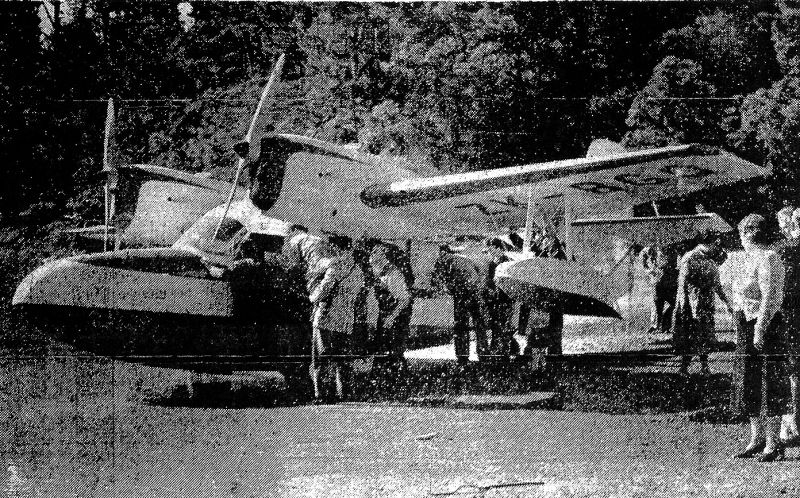
NZTAT Grumman G44 Widgeon ZK-BGQ at Kawau Island on an early preinaugural flight during 1955. Photo: NZ Press/3RD LEVEL NZ collection.

NZTAT Grumman G44 Widgeon ZK-BGQ at Great Barrier Island on another early preinaugural flight during 1955 Photo: NZ Press/3RD LEVEL NZ collection.
.... prior to NZ TOURIST AIR TRAVEL actually commencing non-sked amphibious PAX/freight air services from its downtown Auckland terminus, at Mechanics Bay, on June 29th 1955 .... although regular services did not commence until October 24th 1955.
The airlines primary PAX/freight services, to most major ports scattered throughout the isolated/remote off-shore island communities of the Hauraki Gulf, were suplimented by scenic tourist joyrides/"Magic Carpet" flights over the Auckland region (targeted at both visiting cruise liner traffic as well as local mainland markets/interest) .... and charters to virtually any destination throughout New Zealand in accordance with demand.
Business at NZ TOURIST AIR TRAVEL was "i-n-c-r-e-d-i-b-l-y s-l-o-w t-o d-e-v-e-l-o-p" .... until public philosophy began to adapt to concept of amphibious air services and the advantages these offered .... in that the GRUMMAN WIDGEON was an aircraft with the unique capability of being able to fly off and land on most waterways .... then roll right up onto most beaches in the absence of any airstrip .... or alternatively .... it was even able to operate between most airstrips, where these were available, and as a conventional land-based aircraft. A particular convenience offered by NZ TOURIST AIR TRAVEL services was that PAX/freight traffic, originating from downtown Auckland, could be delivered, quickly, and directly .... almost to the very doorstep on any one of the airlines intended Hauraki Gulf island destinations, rather having to rely upon slow. often indirect, shipping agencies/services .... or in the case of return traffic to the mainland .... avoiding any need to be routed via rural airports which then imposed the added inconvenience of having to rely upon lengthy, and infrequent, road transport services in order to reach final destinations throughout the central city and most of its surrounding suburbs.
Prior to the introduction of regular amphibious air services to the Hauraki Gulf, islanders, having previously relied upon slow and infrequent coastal shipping/ferry services (succeptable to interruption, for days-on-end, by the dictates of certain seasonal weather patterns) as their only means of general transport, supply, and emergency evacuation to the mainland, presented captain LADD with an early, and particularly frustrating, challenge during pre-inaugural service peomotions. This became evident by the simple-minded mentality which existed among some of these communities, at the time, and in respect of precisely what the new air service represented and how these outlying island communities, actually, stood to benefit .... as was hilited by the following period dialogue ....
“Captain LADD .... we think it’s wonderful that you’re going to run this air service between Great Barrier Island and the mainland .... but .... none of us will be able to fly on it because we always use the boat”[/b]
Such dialogue was, possibly, intended to mask over most peoples basic fear of flying more than anything else, but, it was the large and succulent Crayfish resources from the outer islands of the Hauraki Gulf (lacking a food vendors licence these Crayfish .... "Craybirds" as they were marketed .... were sold by the airline as "pets" .... whilst, to satisfy health department officialdom, it disavowed any knowledge or post sale responsibility in regard to pecisely what its clientele did with their "pets" .... recalled captain LADD) .... AND .... what soon became frequent air ambulance/mercy flights ("pregnant women in particular would, typically, sit and wait 9 months .... and 1 day .... before ringing the bell .... and then we'd end up going like hell" .... in the words of captain LADD) that eventually popularized and proved the value of NZ TOURIST AIR TRAVEL's amphibious air services in Auckland .... endearing the airline, and in particular its foundation pilot .... captain LADD (whom later became "quite a lad"/aviation celebrety within New Zealand) .... to both island and mainland communities alike .... each of whom became increasingly-more-dependent upon the air service within a relatively very short period of time.
In fact the GRUMMAM WIDGEON's and NZ TOURIST AIR TRAVEL, in Auckland, were soon and forever personified in captain LADD .... for the joviality of his extroveted personality in as much as for the unique and valuable services these aircraft provided. Captain LADD was reknown for a/his rare and persuasive charm that literally coaxed even the most timid of PAX into flying with him .... reinforced by his simple, relaxing, soothing and confidence building light-hearted humour, which is still well remembered throughout the New Zealand aviation community today, and in the form of some his following poetic "LADDerisms" ....
"Down the ramp and into the damp"
"Lift your feet to avoid the cramp"
"Now is the hour to give'er the power"
"A shower of spray .... And we're away"
.... and anytime the sea condition was rough/choppy with the WIDGEON's (often quite violently), skipping from crest-to-crest upon each successive wave encounter during a water T/O .... captain LADD's catch-phrase of the day then became ....
"Ride'er cowboy .... Ride'er cowboy"
Captain LADD was a "dare-devil" as well as being "somewhat of a risk" taker too (one had to be in order to succeed within this sort of sport/operation), but, he was also an extremly rare, and highly admired/respected breed of airmen, among the last of New Zealands greatest post WW2 service aviation pioneers of the 1940's/50's era.
By 1957 community confidence and dependence upon NZ TOURIST AIR TRAVEL had grown to the extent that services between the airlines downtown Auckland terminus, at Mechanics Bay, Auckland, and Waiheke Island had become a daily schedule .... with a similar daily frequency also then taking effect in regard to services to and from Great Barrier Island by 1959.
New services .... to the Coromandel Peninsula commenced during 1964 .... followed by new services to Northlands Bay Of Islands from late 1966. By this time the airlines principal route network from Auckland, had expanded to include Surfdale, Oneroa, and Onetangi on Waiheke Island;Typhena, Whangaparapara, and Port Fitzroy on Great Barrier island; Paihia, Waitangi, and Russell in the Bay Of Islands; As well as the local islands of Motuihe, Rotoroa, Pakatoa, and Kauwau .... all being part of the airlines regular/daily route network .... and in addition to a mutitude of other mainland and island located beaches, bays, and coves on a less frequent basis.
A popular, but, less frequent .... and certainly a very unusual service also grew out of regular NZ TOURIST AIR TRAVEL's regular/routine operations. This took the form of occasional "Water Funerals" .... which involved the repatriation of deceased persons (usually those whom had been flown across to the mainland for medical attention, but, having succumed during post surgical convalescense) to family/community plots throughout the island communities of the Hauraki Gulf .... AND ALSO .... the dispersal of ashes over the Gulf, by special request/will, and at the convenience of the airline. "We always took these requests very seriously and then persued them with great reverence/dignity" .... recalled captain LADD.
On February 15th 1959 GRUMMAN WIDGEON ZK-BGQ was capsized/sommersalted and damaged as the result of a non-fatal water-landing accident at Bucklands Beach, at Aucklands eastern suburbs. The aircraft was repaired by TEAL and then returned to service during March 1959. A float equipped CESSNA 180 (ZK-BQI) was leased-in from LAKE TAUPO AIRWAYS whilst repairs to the WIDGEON were effected. Within a short time of its return to service .... ZK-BGQ was, once again, damaged as the result of another non-fatal water-landing accident .... this time at Port Fitzroy, Great Barrier Island .... which resulted in damage to the aircrafts wing and one of its wing tip floats.

Grumman G-44 Widgeon ZK-BGQ in a later variation of NZTAT livery during 1959. Photo: D.White/3RD LEVEL NZ.
A 2nd GRUMMAN G44-A WIDGEON, ZK-BPX (ex LV-NCG) was acquired by NZ TOURIST AIR TRAVEL on January 6th 1960 .... this particular aircraft had been built as a civil WIDGEON, during 1946, and became the first of the airlines later production/modified aircraft models. It had been operated in Argentina since 1946.
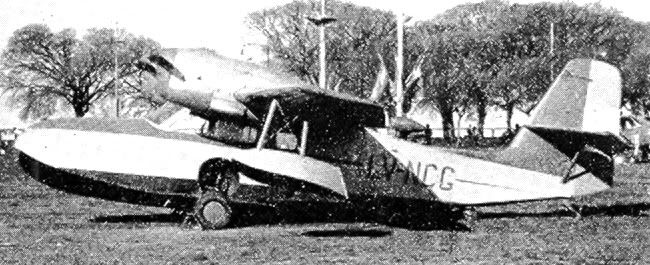
Grumman G44-A Widgeon LV-NCG during its Argentinian service years circa 1955. Photo: Mr Widgeon collection.

Grumman G44-A Widgeon ZK-BPX shortly after entering service with NZTAT during 1961. Photo: 3RD LEVEL NZ collection.
G44-A WIDGEON C/N # 1432 ZK-BPX - KNOWN HISTORY
Built as a civil WIDGEON, 1946 - registration unknown
Sold to Alberto.A DODERO, Corientes, Argentina, July 1946, LV-NCG
Sold to LA UNIVERSDAL CIA DE SEGUROS, Buenos Aires, Argentina, April 1958, LV-NCG
Sold to AYER LEASING PLAN INC, Linden, New Jersey, USA, July 1958, N4262A
Sold to NZ TOURIST AIR TRAVEL, Auckland, New Zealand, January 6th 1960, ZK-BPX
WRITTEN OFF PORT PORT PEGASUS, STEWART ISLAND, NEW ZEALAND, JANUARY 15TH 1964
Prior to the arrival of its 2nd GRUMMAN WIDGEON, NZ TOURIST AIR TRAVEL had, occasionally, leased a CESSNA 180 (ZK-BVD) land-plane from RURAL AVIATION, as additioal lift and on services between Great Barrier Island and the mainland, but, this aircraft had also proven inferior to the WIDGEON in terms of its actual load capabilities.
On August 4th 1961 the airline took control of the foundering Invercargill based AMPHIBIAN AIRWAYS .... and acquired its 2 GRUMMAN WIDGEON aircraft (ZK-AVM and ZK-BAY) along with that airlines South Island operations in the process. One of the southern based WIDGEON's were immediately transferred, north to Auckland, to join its sisterships ZK-BGQ and ZK-BPX .... whilst the other was retained at Invercargill in order to maintain restructured services between Stewart Island and the Southland region. Scenic tourist flights were also then introduced over the Southland region .... and which had not, previously, been undertaken by AMPHIBIAN AIRWAYS. It has been stated that it was the relative prosperity of the North Island operation (due to Aucklands far greater population desnity and "Gateway To New Zealand" tourism status) which enabled the South Island services to exist at all. The NZ TOURIST AIR TRAVEL take-over of AMPHIBIAN AIRWAYS also saw the realisation of Harry ENGLISH's original dream .... of a united North and South Island amphibian air service.
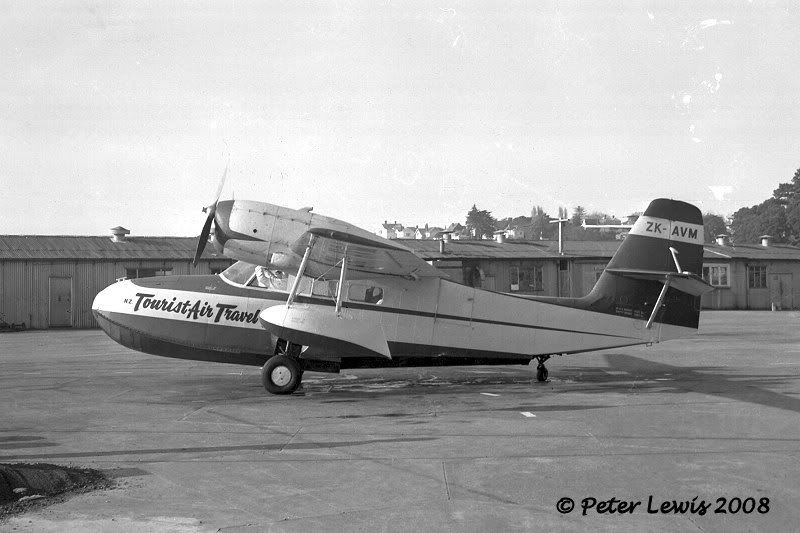
Grumman G44-A Widgeon ZK-AVM in early NZTAT livery and with its original Ranger engine configuration during the early 1960's and after the Ampbibian Airways takeover. Photo: Peter LEWIS collection.
NZ TOURIST AIR TRAVEL continued to prosper, and expand, throughout the 1960's as the airline absorbed the operations of a number of other small South Island land-based air operators .... RITCHIE AIR SERVICES, SOUTHERN SCENIC AIR SERVICES, and WEST COAST AIRWAYS .... each being incorporated into the airline by the mid 1960's .... to result in an extensive network of both tourist related and general air service operations throughout the Westland and Southland regions of New Zealands South Island .... all of which were operated under the NZ TOURIST AIR TRAVEL brand and using a combined land-based and amphibious fleet which comprised of CESSNA 180/185/205/206. DH82 TIGER MOTH, DH87 DRAGON RAPIDE, DH89 DOMINE, and GRUMMAN G-44/A WIDGEON aircraft. The success of its amphibious wing, in the North Island, also continued to grow throughout this period and resulted in another 2 GRUMMAN WIDGEON's then entering sevice with the airline .... G44-A ZK-CFA (ex N9096R) on July 26th 1963 .... and G44 ZK-CHG (ex N97102) on July 3rd 1964 .... both of which were acquired acquired from private ownership and aircraft brokers within the USA. ZK-CFA was another late production civil WIDGEON from 1946 .... whilst ZK-CHG had formerly been another early production US NAVY (BUA 37726 .... later US COAST GUARD 7726) J4F-2 aircraft from 1944 and which had been converted for civil use during 1947. These were also the last 2 GRUMMAN WIDGEON aircraft to be acquired by NZ TOURIST AIR TRAVEL .... and also the last of the type to be imported to New Zealand.
This 1960's boom period also saw NZ TOURIST AIR TRAVEL embark on a powerplant conversion program (undertaken by TEAL) for its entire GRUMMAN WIDGEON fleet .... replacing the aircrafts original, and underpowered, 200 HP 2-bladed-prop Ranger L-440C-5 engines with superior 260 HP Continenal IO-470-D engines with 2-bladed variable-pitch-props which promoted a significant performance boost .... and upgraded each of these aircraft to "GRUMMAN SUPER WIDGEON" specification.
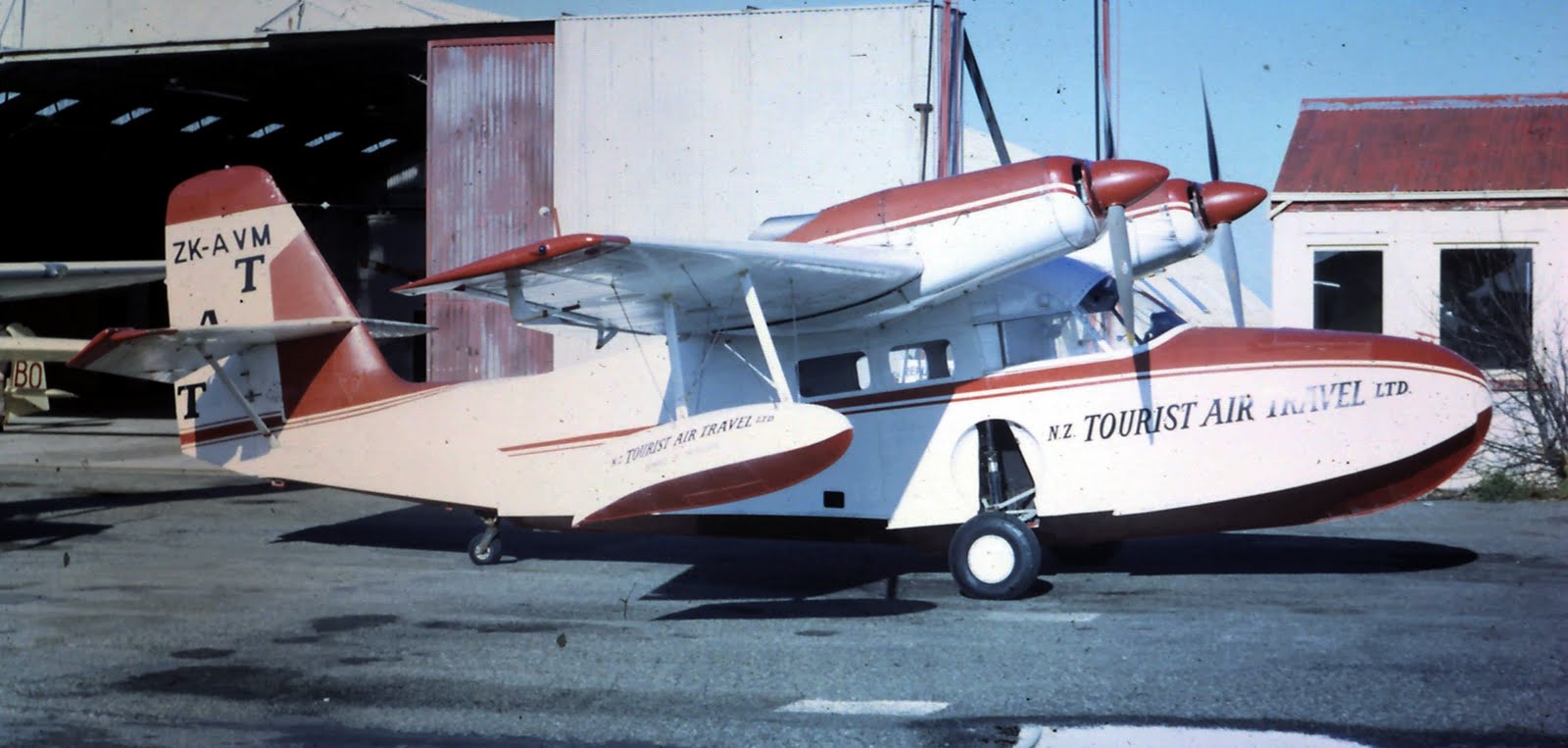

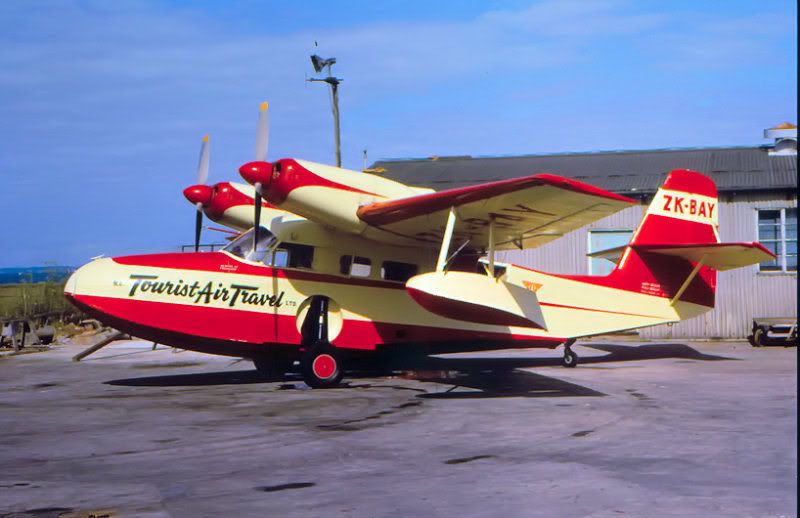
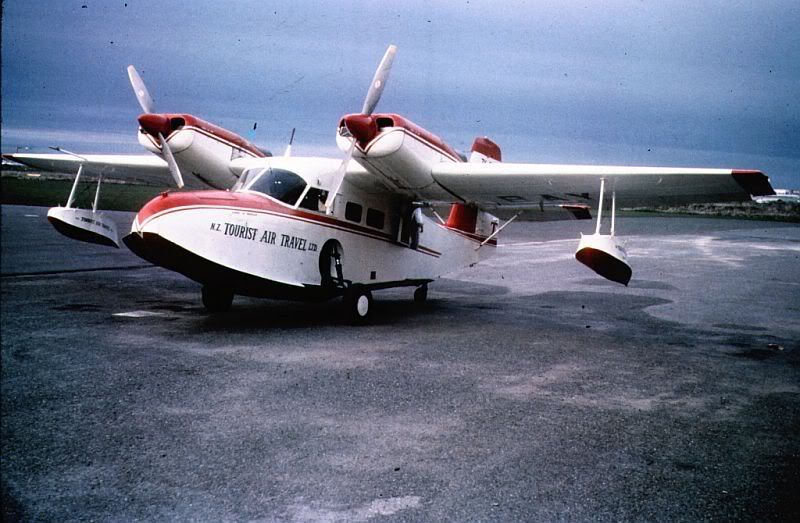
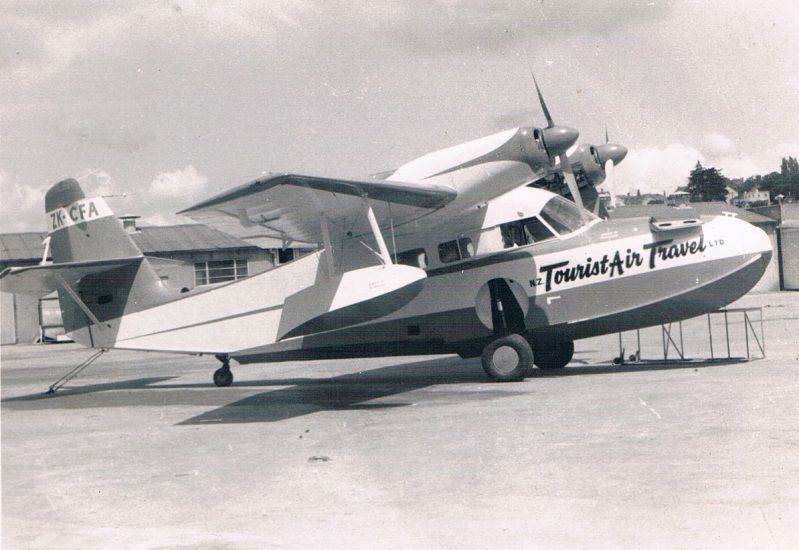
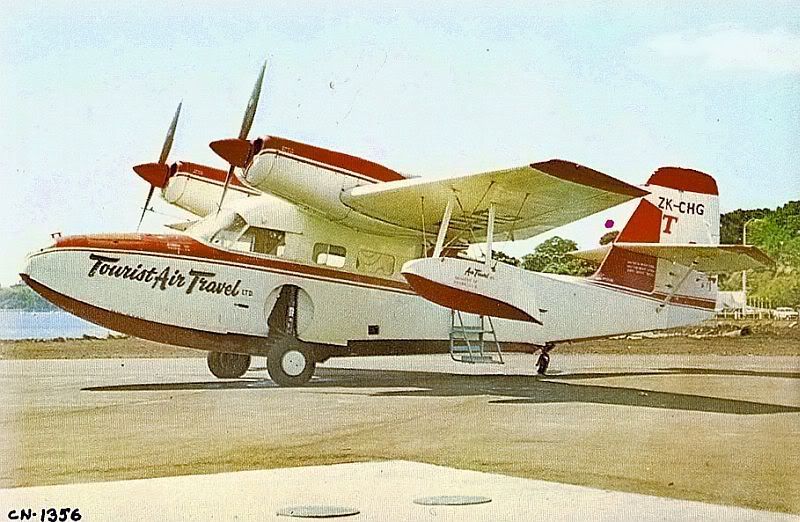

NZTAT Grumman G44 and G44-A Widgeon aircraft ZK-AVM, ZK-BAY, ZK-CFA, and ZK-CHG after TEAL conversion to Continenal IO-470-D engines circa 1965. Photos: Private collection/NZ CIVAIR (ZK-AVM # 1), Steve LOWE/3RD LEVEL NZ collection (ZK-AVM # 2), Private colection (ZK-BAY), Trevor PENMAN (ZK-CFA), Mr WIDGEON (ZK-CHG # 1), D WHITE/3RD LEVEL NZ collection (ZK-CHG # 2)
GRUMMAN G44/A WIDGEON TECHNICAL SPECIFICATIONS - MODIFIED/UPGRADED CIVIL CONFIGURATION
Length = 31fT i IN
Wing Span = 40 FT
Power Plant = 2X Continental IO-470-D engines rated at 260 HP
Weight = 5,100 LBS MGTOW
PAX Capacity = 4-5 (plus 1X pilot)
Range = 1,000 NM
Speed = 150 KTS (max) - 130 KTS (typical cruise)
Type = Light amphibious transport with fixed/non-retractable wingtip floats and engine/prop modifications
During this period 2 aircraft were also discovered to require urgent keel modifications in light of their intermittent and disttressing waterlooping habit .... which had resulted in a number of previous incidents/accidents and subsequent aircraft damage. All GRUMMAN WIDGEON aircraft in existence .... and well before the period of their entry to New Zealand service .... were supposed to have undergone a mandatory keel modification. This US aviation directive was the result of several waterlooping accidents (a loss of directional control/stability) overseas and required the removal of some 6 inches of keel/step from the lower hull of each individual aircraft. Completly undetected by the NEW ZEALAND CIVIL AVIATION AUTHORITY at the time of their acquisition .... NZ TOURIST AIR TRAVEL, had, unwittingly, and quite coincidentally, acquired 2 GRUMMAN WIDGEON's that were prone to waterloop when landing on flat calm sea conditions for thei lack of having been modified .... and which turned out to be the completly unmodified ZK-BGQ .... along with the only partially modified ZK-BPX. Following the chance discovery of this major discrepency (during captain LADD's May/June 1961 tour of the USA whilst in search of a suitable GRUMMAN WIDGEON replacement) and their subsequent modification, both of these aircraft then performed flawlessly throughout the remainder of their New Zealand service.
In the case of ZK-BGQ (ex F-OAGX) .... in particular .... it was this aircrafts previous history of waterlooping (the cause of which was not detected by French aviation authorities either) that had resulted in its being involved in numerous incidents/accidents throughout the islands of French Polynesia (which was also directly attributable to NZ TOURIST AIR TRAVEL's own, occasional, difficulties with this same WIDGEON) and had prompted RAI, of Tahiti, to withdraw it from service, and then "gladly" sell/"get rid of" the aircraft during 1954 .... having already replaced it with a GRUMMAN MALLARD (F-OAII) during 1953.
It was also during Fred LADD's 1961 tour of the USA that American aircraft brokers had first endeavoured to interest NZ TOURIST AIR TRAVEL into acquiring GRUMMAN GOOSE aircraft .... as a WIDGEoN replacement. This particular persuasion was resisted by the airline on the grounds that the capacity of the GOOSE well exceeded the airlines, then, current needs.
During its 12 year operational history NZ TOURIST AIR TRAVEL earned the distinction of transporting numorous famous personalities/VIP celebrities throughout New Zealand, but, the event which became the airlines very finest hour occurred with the 1963 royal tour of New Zealand by HM Queen Elizabeth 2nd and HRH Prince Phillip/The Duke Of Edinburgh. Organisers of the royal tour paid the airline a tremendous honour when it was selected to become the official transport for HRH Prince Phillip, on the Nelson, Anakiwa, and Blenheim sector of this royal tour. In anticipation of this regal service .... GRUMMAN WIDGEON ZK-BPX in company with ZK-BGQ as a standby aircraft .... were lavishly reupholstered and overhauled at government expence. This royal flight was flown by Captain LADD on February 13th 1963 .... and which also became the Duke Of Edinburgh's first ever flight on an amphibious aircraft. Further honour was bestowed upon captain LADD during 1963 when he was nominated for, and then awarded, the MBE for his services to New Zealand and Pacific aviation .... and which was presented to him, by HRH Queen Elizabeth 2nd, on February 12th 1963, at a Wellington based ceremony, during this same royal tour.
NZ TOURIST AIR TRAVEL's royal pride of February 13th 1963 was also marred by a minor accident which involved GRUMMAN WIDGEON ZK-AVM. A landing gear defect enroute between the Bay Of Islands and Auckland prevented this aircraft from making its normal water-landing at Mechanics Bay. This forced its diversion to Whenuapai Airport and an emergency ground-landing at North Aucklands Whenuapai Airport which resulted in minor damage to the aircraft, after a partial main-gear collapse, but, without injury to either of the 2 POB. This incidentalso resulted in the urgent recall, back to Auckland, of both "Royal WIDGEON's" in order to fascilitate the airlines services over the follwing days.
On January 15th 1964 GRUMMAN WIDGEON ZK-BPX was damaged as the result of a non-fatal gear-down water-landing accident at Port Pegasus, Stewart Island.
Though this aircraft was deemed repairable, it was eventually written-off during the subsequent recovery effort and through the mishandling of the operation by the salvage company concerned. Its remains were stored at the MUSEUM OF TRANSPORT AND TECHNOLOGY, in Auckland, for a ptime, but, over time, these were also progressively canibalized of most useful parts by NZ TOURIST AIR TRAVEL, MOUNT COOK AIRLINES, and SEA BEE AIR. Whatever now remains of ZK-BPX is still believed to be held in storage somewhere within the Auckland area. This particular aircraft was also the only member of the New Zealand operated GRUMMAN WIDGEON fleet that never made conversion to Continental IO-470-D engines and "SUPER WIDGEON" status .... retaining its original Ranger engines throughut its entire, short, New Zealand service.
On December 11th 1964 NZ TOURIST AIR TRAVEL was presented the Order Of Saint John .... awarded by the NEW ZEALAND ST.JOHNS AMBULANCE SERVICE in recognition of the airlines emergency/medical evacuation services/assistance among the island communities of the Hauraki Gulf. Even today .... much is owed by so many to so few .... through countless lives being having been saved by this particular service.
And on April 8tn 1965 Fred LADD was presented the International Brackley Memorial Trophey .... awarded by the GUILD OF AIR PILOTS & NAVIGATORS, at a UK based ceremony .... and also in recognition of his/the airlines humanitarian services throughout the islands of the Hauraki Gulf .... much of which were often undertaken during adverse weather or under, otherwise, extremly difficult operating conditions.
Never one to miss any opportunity of gaining good publicity for NZTAT .... Captain LADD seized upon the first day of commercial operations at Auckland International Airport to make history on November 24th 1965 .... effectively robbing the mainstream scheduled operators of some prestige .... by operating what became "the first ever commercial arrival" at the new airport (the airport was not officially opened until January 29th 1966 .... and which was celebrated with a 3-day air pageant until January 31st 1966). An NZTAT GRUMMAN WIDGEON was chartered by the Travellers Information Service in order to perform this service .... landing at Auckland International Airport at 07:40 AM .... ahead of an AIR NEW ZEALAND/TEAL L188 ELECTRA service from Nandi/Fiji that same morning and a QANTAS AIRWAYS B707-138B service from Sydney/Australia later during day. Mabel LADD (the wife of Captain Fred LADD's) paid "One Shilling" to become "the very first fare-paying PAX" to ever step from an aircraft at Auckland International Airport .... to the disillusion of both AIR NEW ZEALAND/TEAL and NZNAC officials. Always "the showman" .... and after a brief tour of the new airports facilties .... Fred LADD then astonished assembled airline representatives by commenting ....
You can't do this with your PAX can you ![/b]
.... and upon this remark he then promptly lifted his wife over his shoulder and carried her back to the waiting GRUMMAN WIDGEON prior departing for the airlines Mechanics Bay base at downtown Auckland.
Captain LADD eventually retired from NZ TOURIST AIR TRAVEL on March 31st 1967 .... the day upon which he also flew GRUMMAN WIDGEON ZK-BGQ at low altitude, down the length of the Waitemata Harbour, and straight under the Auckland Harbour Bridge, as his final parting salute to the city of Auckland as well as a private celebration of his own 12 years of service to the Hauraki Gulf and the amphibious airline he had been instrumental in founding. This particular stunt was performed much to the horror of his unsuspecting wife, and 2 PAX/guests, whom accompanied him aboard the aircraft during this final flight. "UNDER THE BRIDGE" .... his wife exclaimed once airborne and upon sudden realisation of his intentions. "YOU'LL LOSE YOUR LICENCE .... YOU'LL LOSE EVERYTHING .... YOU CAN'T GO UNDER THE BRIDGE" .... she protested further. Taking photographs, himself, as the aircraft slipped beneath the bridges main span she once again chastized him immediately afterward .... "NOT ONLY WAS IT UNDER THE BRIDGE .... BUT .... IT WAS NO HANDS TOO" .... she retorted.

NZTAT Grumman G44 Widgeon ZK-BAY at T/O from the Waitemata Harbour and passing the Auckland harbour bridge. Photo: Gladys GOODALL/3RD LEVEL NZ collection.
This particular, and now infamous, feat resulted in Captain LADD being prosecuted under Cvil Aviation safety regulations and his summons to court .... but .... which also concluded in his then being "discharged without conviction" under terms of "leniency" provided within the law/act .... albeit with a severe reprimand (told what a "bad lad"/LADD I'd been and warned to never, ever, repeat such a violation in the future" .... according to captain LADD) by the presiding magistrate, Judge W.J.MEADE, and also then having court costs awarded against him.
Fred LADD went on to colourfully persue his, then, growing interest in both rotary wing and other tourist related aviation ventures within the Rotorua and Taupo regions of New Zealands central North Island .... particularly under the GUYSERLAND AIRWAYS/FRED LADD's VOLCANIC WONDERFLITES, and AIR CENTRAL banners, followed by his later interest in recreational gliding .... the latter of which also resulted in his coining of what then became one of his final famous "LADDerisms" ....
"A shower of grass .... And I'm on my arse"[/b]
.... as he, himself, later described.
Captain Fred LADD passed away, of Cancer, on January 22nd 1989, at the age of 80 years .... having logged some 21,109 hours total flying time. His passing marked the end of another era in New Zealand aviation history, but, it by no means represented the final chapter in the classic New Zealand GRUMMAN amphibian story.
Mark C
AKL/NZ
ADDENDA ....
Special thanks to Father Steve LOWE/"3RD LEVEL NEW ZEALAND" for his kind co-operation in regard to my use of a number of early aircraft images featured within "PART 1" of this article. I recommend that anyone interested in learning more about some of New Zealands past and present 3rd level airlines/operators should take time to familiarise themselves with the following fascinating website ....
3RD LEVEL NEW ZEALAND
3rdlevelnz.blogspot.co.nz/
PLEASE NOTE: I have endeavoured to credit all early photos (those not taken by me personally) to their known/rightful photographers .... or source of supply. Contact me directly in cases of any errors or omissions and I will do my utmost to ensure correct/propper accreditation if anything else is amiss.
Gone now, but, by no means forgotten. The origins of New Zealands SEA BEE AIR .... an amphibious airline that was based at Aucklands downtown waterfront between the mid 1970's and early early 1990's .... may be traced back to the formation of AMPHIBIAN AIRWAYS at Invercargill, in the South Island of New Zealand.
AMPHIBIAN AIRWAYS was founded, during 1949, by a small group of New Zealand pioneer aviators .... Fred ADAMS, Arthur DUTHIE, Harry ENGLISH, and Arthur HAMILTON .... in company with a syndicate of Southland businessmen/investors .... with the intention of forming an airline to fly primariliy from Invercargill .... across the Fauveaux Straight .... to New Zealands southernmost community on Stewart Island.
The absence of any airstrip on Stewart Island, at the time, but, an abundance of fiords, lakes, and other coastal waterways littered throughout New Zealands beautiful Southland region, obviously, favoured marine or amphibious type aircraft for this venture.
A GRUMMAN G44-A WIDGEON .... which had been operated in New Guinea since 1946 .... was located and acquired from the AUSTRALASIAN PETROLEUM CORPORATION/VACUUM OIL COMPANY, based in Sydney, Australia. and then imported/shipped to New Zealand, during December 1950, to become ZK-AVM (ex VH-AZO).

Grumman G44-A Widgeon VH-AZO in Australasian petroleum Corporation livery circa 1949. Photo: Mr WIDGEON collection.

Grumman G44-A Widgeon ZK-AVM in Amphibian Airways livery during 1951. Photo: Ed COATES collection.
G44-A WIDGEON C/N # 1466 ZK-AVM - KNOWN HISTORY
Built as a civil WIDGEON, 1946, NC86640
Sold to AUSTRALASIAN PETROLEUM CORPORATION/VACUUM OIL, December 1946, VH-AZO
Sold to AMPHIBIAN AIRWAYS, Invercargill, New Zealand, December 1950, ZK-AVM
Inherited by NZ TOURIST AIR TRAVEL, Auckland New Zealand, August 4th 1961, ZK-AVM
Converted to SUPER WIDGEON (260 HP Continental IO-470-D engines) 1965
Inherited by MOUNT COOK AIRLINES, Auckland New Zealand, December 31st 1967, ZK-AVM
Leased to STEWART ISLAND AIRWAYS, Invercargill, New Zealand, May 1st 1976, ZK-AVM
STEWART ISLAND AIRWAYS, Invercargill, New Zealand, September 3rd 1976, ZK-AVM
Inherited by SEA BEE AIR, Auckland, New Zealand, October 22nd 1976, ZK-AVM
Returned to SEA BEE AIR, Auckland, New Zealand, November 1976, ZK-AVM
Sold to Peter WALKER, Sydeney, Australia, July 1979, ZK-AVM/AT373N
Loaned to SEA BEE AIR/FIJI AIR, Suva, Fiji, August 1979, ZK-AVM/AT373N
Returned to SEA BEE AIR/Peter WALKER, Auckland, New Zealand, July 1981, ZK-AVM/AT373N
Withdrawn from service and stored, Auckland, New Zealand, July 1981, ZK-AVM
Sold to CORAL WINGS, Cairns, Australia, May 1987, VH-WET
Sold to HASSIM EXPDITIONS & ADVENTURES, Papua , New Guinea, April 1994, P2-WET
Sold to Owen HARNISH, Auckland, New Zealand, July 1st, 1996, ZK-AVM
Leased to SALT AIR, Paihia, Bay Of Islands, New Zealand, ZK-AVM - date unknown
Withdrawn from service and stored at Auckland, New Zealand, 2000, ZK-AVM
Sold to Warren DENHOLM/AVSEPCS LTD, Auckland, New Zealand, May 2012, ZK-AVM
CURRENTLY STORED AT ARDMORE AERODROME, SOUTH AUCKLAND, NEW ZEALAND
GRUMMAN G44/A WIDGEON TECHNICAL SPECIFICATIONS - ORIGINAL CIVIL CONFIGURATION
Length = 31fT i IN
Wing Span = 40 FT
Power Plant = 2X Ranger L-440C-5 engines rated at 200 HP
Weight = 4,500 LBS MGTOW
PAX Capacity = 4-5 (plus 1X pilot)
Range = 800 NM
Speed = 150 KTS (max) - 130 KTS (typical cruise)
Type = Light amphibious transport with fixed/non-retractable wingtip floats
GRUMMAN JRF-2 TECHNICAL SPECIFICATIONS - ORIGINAL MILITARY CONFIGURATION
Same as above except in regard to the following details ....
Type = Light amphibious utility/transport. Instrument trainer. Coastal patrol flying boat
Armament = 1X 200 LB depth charge - anti-submarine patrol
On August 1st 1942 a US COAST GUARD JRF-1 (V212) was credited for depth-charging and sinking the German submarine U-166 off the Mississippi Delta, in the Gulf Of Mexico .... although more recent evidence suggests this may in fact have been U-171 and that the aircrafts attack "did not" result in a sinking of this submarine. The latter has gained credibility since the confirmed wreck of U-166 was discovered, recently, by BP/SHELL OIL .... some 100 miles further south of the aircrafts reported attack position and at a locality which is also consistent with the USS PC-566 having reported attacking a German submarine on July 31st 1942. The official war diary from the U-171 also, apparently, records it having been attacked, by air, near the WIDGEON's reported attack position on August 1st 1942 but without any serious damage having been inflicted.
This particular aircraft was built as a civil WIDGEON, during 1946, and became the very first of its type to be operated in New Zealand .... and was also the only one of its type to ever see service in Australia.
After reassembly, flight testing, and pilot training .... a number of pre-inaugural services were operated throughout the Southland region, between January and February of 1951, with the aircraft then commencing charter services for AMPHIBIAN AIRWAYS on March 16th 1951 .... followed by non-sked services between Invervargill and Stewart Island from October 1st 1951.
Despite initial reservations as to the suitability of these aircraft for operations within an environment as challenging as that imposed by the Southland geography and its associated weather conditions, as well as their practicality for airline type operations too, the WIDGEON quickly proved its unique versatility, and dependability, and a 2nd GRUMMAN G44 WIDGEON, ZK-BAY (ex N9326H), was acquired from the USA during 1952 ....

Grumman G44 Widgeon N9326H in private US ownership circa 1950. Photo: Mr WIDGEON collection.

Amphibian Airways Grumman G44 Widgeon ZK-BAY shortly after entering the New Zealand civil air register during 1952. Photo: Private Collection.

Amphibian Airways Grumman G44 Widgeon ZK-BAY at Stewart Island during 1955. Photo: Steve LOWE/3RD LEVEL NZ collection.
J4F-2/G44 WIDGEON C/N # 1362 ZK-BAY - KNOWN HISTORY
Built as a J4F-2, 1944
Delivered to US NAVY, 1944, BUA 37732
Transferred to ROYAL NAVY (GOSLING 1), 1944, FP462
Returned to US NAVY, October 1945, BUA - unknown
Converted for civil use (G44 WIDGEON) N9236H - date unknown
Other details prior to 1952 - unknown
Sold to AMPHIBIAN AIRWAYS, Invercargill, New Zealand, 1952, ZK-BAY
Inherited by NZ TOURIST AIR TRAVEL, Auckland New Zealand, August 4th 1961, ZK-BAY
Converted to SUPER WIDGEON (260 HP Continenal IO-470-D engines) 1965
Inherited by MOUNT COOK AIRLINES, Auckland New Zealand, December 31st 1967, ZK-BAY
WRITTEN OFF NEAR BROWNS ISLAND, WAITEMATA HARBOUR, AUCKLAND, NEW ZEALAND, DECEMBER 24TH 1970
ZK-BAY was an early production former military aircraft that saw service from 1944 .... as US NAVY (BUA 37732) J4F-2. It was also one of 15 of the type that were transferred to the ROYAL NAVY (FP462) under the US/UK Lend-Lease program to be operated by RAF COASTAL COMMAND .... as GOSLING 1 aircraft .... before returning to the US NAVY after WW2 and later being converted for civil use.
The GRUMMAN G44 WIDGEON (the earliest/original production model) and the GRUMMAN G44-A WIDGEON (the later production/modified model) both varied .... principally in regard to the aircrafts lower hull/keel shape.
For almost 10 years AMPHIBIAN AIRWAYS' blue/yellow liveried GRUMMAN WIDGEON's struggled to maintain the airlines non-sked/PAX air services between Invercargill and Stewart Island; Coastal service/supply runs (to the manned lighthouse and Puysegur Point near Presevgation Inlet at the southernmost tip of the Fiordland coastline, and fishing vessels at sea), along with occasional air ambulance mercy flights; And charters (fishing/hunting expeditions in particular) into remote and otherwise inaccessible locations throughout the natural and unspoiled Fiordland (National Park) and Southern Lakes districts of the expansive and rugged southwestern region of New Zealands South Island (Lakes Poteriteri, Hauroko, Monowai, Manapouri, Te Anau, and occasionally Lake Wakatipu/Queenstown, and most of the fiords and sounds along the Fiordland coastline between Puysegur Point and Milford Sound all being serviced) and to Stewart Island .... most of which were advertised/billed as "Unusual Holidays" and "Great Southern Adventures".
An impression of the isolation, remoteness, and inaccessibility associated with parts of this region may be realised by the fact that, during its early operational years, the airline even discovered a previously uncharted Southland lake ("Lake Monk" .... named for the airlines foundation pilot captain Jim MONK) and which, apart from becomming New Zealands first ever amphibious air operator, is possibly its only other major claim to fame.
Although the airlines services proved to be quite practical .... as well as very unique within New Zealand at the time also .... the operations of AMPHIBIAN AIRWAYS were never entirely successful/properous. Despite providing an essential air link between Stewart Island and the mainland .... the demand for its services generally peaked only during the summer months of each year, but, were not sufficiently consistent throughout the remaining off-season months of each year .... a situation that was unaided by the fact that Southland, during this period, was also a region of commercial decline. These factors starved the airline of growth potential .... of the type necessary to encourage/justify ongoing financial support by its shareholders seeking a return for their investment in the airline. After several years of more-or-less static activity, consecutive losses .... and subsequent consolidation .... New Zealands first ever commercial amphibious airline venture finally accepted a takeover bid from the Auckland based NZ TOURIST AIR TRAVEL, on July 25th 1961, and both airlines formally merged on August 4th 1961.
NZ TOURIST AIR TRAVEL was founded during 1954 .... as the result of a disagreement among directors of the Invercarill based AMPHIBIAN AIRWAYS. More enterprising and visionary members of the South Island airlines board had realised, from a very early stage, the limited growth prospect available to their airline with services based solely within the Souththland region, and were keen to expand operations into New Zealands North Island .... to exploit the, obviously, greater potential available within the comparatively more prosperos north, and by using GRUMMAN WIFGEON aircraft to operate similar amphibious air services, from Auckland to the scattered island communities of the similarly remote and expansive Hauraki Gulf region. This aspiration, innevitably, resulted in a clash of philosophies among the southern airlines board members ("Auckland can look after itself"[/b] being the prevailing attitude) .... and which resulted in co-director Harry ENGLISH, in company with a number of like-minded investors, then severing ties with AMPHIBIAN AIRWAYS in order to persue, independently, the prospect of such an amphibious air service being established within New Zealands North Island.
A GRUMMAN G-44 WIDGEON was located and acquired from REGIE AERIEN INTERINSULAIRE (renamed RESAU AERIEN INTERINSULAIRE during 1958 and having also operated under the AIR TAHITI brand), based in Papeete, Tahiti, French Polynesia .... and then imported/Shipped to New Zealand, during November 1954, to become ZK-BGQ (ex F-OAGX).

Philatelic artwork by J.L.RAQUET comemorating the devlopment of aviation in French Polynesia with this extremly rare image of Grumman G44 Widgeon F-OAGX in RAI livery prior to its sale to NZTAT as ZK-BGQ

Grumman G44 Widgeon ZK-BGQ in its original NZTAT livery shortly after entering service during 1955. Photo: Mr WIDGEON collection.
J4F-2/G44 WIDGEON C/N # 1356 ZK-BGQ - KNOWN HISTORY
Built as a J4F-2, 1944
Delivered to US NAVY, 1944, BUA 37761
Transferred to US COAST GUARD, 7761 - date unknown
Converted for civil use (G44 WIDGEON) June 26th 1947, NC67193
Other details prior to 1949 - unknown
Sold to REGIE AERIEN INTERINSULAIRE, Papeete, Tahiti, French Polynesia, March 1949
Sold to NZ TOURIST AIR TRAVEL, Auckland, New Zealand, November 1954, ZK-BGQ
Converted to SUPER WIDGEON (260 HP Continenal IO-470-D engines) 1965
Inherited by MOUNT COOK AIRLINES, Auckland New Zealand, December 31st 1967, ZK-BGQ
Inherited by SEA BEE AIR, Auckland, New Zealand, October 22nd 1976, ZK-BGQ
Leased to STEWART ISLAND AIRWAYS, Invercargill, New Zealand, November 1976, ZK-BGQ
Returned to SEA BEE AIR, Auckland, New Zealand, March 1977, ZK-BGQ
WRITTEN OFF AT KELLYS BAY, KAIPARA HARBOUR, NORTH AUCKLAND, NEW ZEALAND, JANUARY 21ST 1980
This particular aircraft became the very first of the type to be operated by NZ TOURIST AIR TRAVEL. It too had been a former US NAVY (BUA 37761 .... later registered to the US COAST GUARD as 7761) J4F-2 aircraft from 1944 and prior to being converted for civil use after WW2. It was also the very first aircraft to be operated by RAI .... having entered service with the airline on March 14th 1949 .... to operate interisland services between Tahiti , Moorea, Tetiaroa, Huahine, Raiatea, Bora Bora, Tupai, and Maupiti .... being among the most frequently serviced destinations .... in addition to charters to the Australes, Gambier, Tuamotu, and Marquesas archipeligos of French Polynesia .... and also, occasionally, flying as far west as Aitutaki, in the Cook Islands, in order to connect with NZNAC/TEAL services to Auckland, New Zealand).
Technical assistance to the fledgling new airline was provided by TEAL (now AIR NEW ZEALAND) whom, at the time, still operated SHORTS SOLENT flying boats from Aucklands Waitemata Harbour .... and which it used to service its famous Coral Route through the islands of Polynesia (Fiji, Western Samoa, the Cook Islands, and Tahiti). These were the days before Auckland International Airport had ever been developed from the existing Mangere Aerodrome .... and also before Aucklands Whenuapai Airport (now RNZAF Base Whenuapai) had been developed into an air terminal of any major regional significance.
The overhaul of GRUMMAN WIDGEON ZK-BGQ took much longer to complete and also became a considerably more expensive proposition than was anticipated. Given the very poor state of its airframe .... after an apparently hard life operating within the islands of French Polynesia (the aircraft was, apparently, little more than a corroded wreck .... in the oppinion of some TEAL engineers), what was, originally, intended to have been a mere overhaul, recertification, and then service re-entry escalated into a major time and resource consuming total airframe rebuild. Upon its reassembly, flight testing, crew training, and delivery to NZ TOURIST AIR TRAVEL on May 2nd 1955 .... the WIDGEON then operated a number of pre-inaugural and proving flights throughout the Auckland and Hauraki Gulf region (in the words of the airlines chief pilot and general manager captain Fred LADD .... "given such a great abundance of harbours, bays, beaches, coves, lakes, and islands located throughout the Auckland, Hauraki Gulf, and Northland reguions, and before we ever had any idea as to where we actually intended to fly .... if it was wet then I wanted to land on it") ....

NZTAT Grumman G44 Widgeon ZK-BGQ at Kawau Island on an early preinaugural flight during 1955. Photo: NZ Press/3RD LEVEL NZ collection.

NZTAT Grumman G44 Widgeon ZK-BGQ at Great Barrier Island on another early preinaugural flight during 1955 Photo: NZ Press/3RD LEVEL NZ collection.
.... prior to NZ TOURIST AIR TRAVEL actually commencing non-sked amphibious PAX/freight air services from its downtown Auckland terminus, at Mechanics Bay, on June 29th 1955 .... although regular services did not commence until October 24th 1955.
The airlines primary PAX/freight services, to most major ports scattered throughout the isolated/remote off-shore island communities of the Hauraki Gulf, were suplimented by scenic tourist joyrides/"Magic Carpet" flights over the Auckland region (targeted at both visiting cruise liner traffic as well as local mainland markets/interest) .... and charters to virtually any destination throughout New Zealand in accordance with demand.
Business at NZ TOURIST AIR TRAVEL was "i-n-c-r-e-d-i-b-l-y s-l-o-w t-o d-e-v-e-l-o-p" .... until public philosophy began to adapt to concept of amphibious air services and the advantages these offered .... in that the GRUMMAN WIDGEON was an aircraft with the unique capability of being able to fly off and land on most waterways .... then roll right up onto most beaches in the absence of any airstrip .... or alternatively .... it was even able to operate between most airstrips, where these were available, and as a conventional land-based aircraft. A particular convenience offered by NZ TOURIST AIR TRAVEL services was that PAX/freight traffic, originating from downtown Auckland, could be delivered, quickly, and directly .... almost to the very doorstep on any one of the airlines intended Hauraki Gulf island destinations, rather having to rely upon slow. often indirect, shipping agencies/services .... or in the case of return traffic to the mainland .... avoiding any need to be routed via rural airports which then imposed the added inconvenience of having to rely upon lengthy, and infrequent, road transport services in order to reach final destinations throughout the central city and most of its surrounding suburbs.
Prior to the introduction of regular amphibious air services to the Hauraki Gulf, islanders, having previously relied upon slow and infrequent coastal shipping/ferry services (succeptable to interruption, for days-on-end, by the dictates of certain seasonal weather patterns) as their only means of general transport, supply, and emergency evacuation to the mainland, presented captain LADD with an early, and particularly frustrating, challenge during pre-inaugural service peomotions. This became evident by the simple-minded mentality which existed among some of these communities, at the time, and in respect of precisely what the new air service represented and how these outlying island communities, actually, stood to benefit .... as was hilited by the following period dialogue ....
“Captain LADD .... we think it’s wonderful that you’re going to run this air service between Great Barrier Island and the mainland .... but .... none of us will be able to fly on it because we always use the boat”[/b]
Such dialogue was, possibly, intended to mask over most peoples basic fear of flying more than anything else, but, it was the large and succulent Crayfish resources from the outer islands of the Hauraki Gulf (lacking a food vendors licence these Crayfish .... "Craybirds" as they were marketed .... were sold by the airline as "pets" .... whilst, to satisfy health department officialdom, it disavowed any knowledge or post sale responsibility in regard to pecisely what its clientele did with their "pets" .... recalled captain LADD) .... AND .... what soon became frequent air ambulance/mercy flights ("pregnant women in particular would, typically, sit and wait 9 months .... and 1 day .... before ringing the bell .... and then we'd end up going like hell" .... in the words of captain LADD) that eventually popularized and proved the value of NZ TOURIST AIR TRAVEL's amphibious air services in Auckland .... endearing the airline, and in particular its foundation pilot .... captain LADD (whom later became "quite a lad"/aviation celebrety within New Zealand) .... to both island and mainland communities alike .... each of whom became increasingly-more-dependent upon the air service within a relatively very short period of time.
In fact the GRUMMAM WIDGEON's and NZ TOURIST AIR TRAVEL, in Auckland, were soon and forever personified in captain LADD .... for the joviality of his extroveted personality in as much as for the unique and valuable services these aircraft provided. Captain LADD was reknown for a/his rare and persuasive charm that literally coaxed even the most timid of PAX into flying with him .... reinforced by his simple, relaxing, soothing and confidence building light-hearted humour, which is still well remembered throughout the New Zealand aviation community today, and in the form of some his following poetic "LADDerisms" ....
"Down the ramp and into the damp"
"Lift your feet to avoid the cramp"
"Now is the hour to give'er the power"
"A shower of spray .... And we're away"
.... and anytime the sea condition was rough/choppy with the WIDGEON's (often quite violently), skipping from crest-to-crest upon each successive wave encounter during a water T/O .... captain LADD's catch-phrase of the day then became ....
"Ride'er cowboy .... Ride'er cowboy"
Captain LADD was a "dare-devil" as well as being "somewhat of a risk" taker too (one had to be in order to succeed within this sort of sport/operation), but, he was also an extremly rare, and highly admired/respected breed of airmen, among the last of New Zealands greatest post WW2 service aviation pioneers of the 1940's/50's era.
By 1957 community confidence and dependence upon NZ TOURIST AIR TRAVEL had grown to the extent that services between the airlines downtown Auckland terminus, at Mechanics Bay, Auckland, and Waiheke Island had become a daily schedule .... with a similar daily frequency also then taking effect in regard to services to and from Great Barrier Island by 1959.
New services .... to the Coromandel Peninsula commenced during 1964 .... followed by new services to Northlands Bay Of Islands from late 1966. By this time the airlines principal route network from Auckland, had expanded to include Surfdale, Oneroa, and Onetangi on Waiheke Island;Typhena, Whangaparapara, and Port Fitzroy on Great Barrier island; Paihia, Waitangi, and Russell in the Bay Of Islands; As well as the local islands of Motuihe, Rotoroa, Pakatoa, and Kauwau .... all being part of the airlines regular/daily route network .... and in addition to a mutitude of other mainland and island located beaches, bays, and coves on a less frequent basis.
A popular, but, less frequent .... and certainly a very unusual service also grew out of regular NZ TOURIST AIR TRAVEL's regular/routine operations. This took the form of occasional "Water Funerals" .... which involved the repatriation of deceased persons (usually those whom had been flown across to the mainland for medical attention, but, having succumed during post surgical convalescense) to family/community plots throughout the island communities of the Hauraki Gulf .... AND ALSO .... the dispersal of ashes over the Gulf, by special request/will, and at the convenience of the airline. "We always took these requests very seriously and then persued them with great reverence/dignity" .... recalled captain LADD.
On February 15th 1959 GRUMMAN WIDGEON ZK-BGQ was capsized/sommersalted and damaged as the result of a non-fatal water-landing accident at Bucklands Beach, at Aucklands eastern suburbs. The aircraft was repaired by TEAL and then returned to service during March 1959. A float equipped CESSNA 180 (ZK-BQI) was leased-in from LAKE TAUPO AIRWAYS whilst repairs to the WIDGEON were effected. Within a short time of its return to service .... ZK-BGQ was, once again, damaged as the result of another non-fatal water-landing accident .... this time at Port Fitzroy, Great Barrier Island .... which resulted in damage to the aircrafts wing and one of its wing tip floats.

Grumman G-44 Widgeon ZK-BGQ in a later variation of NZTAT livery during 1959. Photo: D.White/3RD LEVEL NZ.
A 2nd GRUMMAN G44-A WIDGEON, ZK-BPX (ex LV-NCG) was acquired by NZ TOURIST AIR TRAVEL on January 6th 1960 .... this particular aircraft had been built as a civil WIDGEON, during 1946, and became the first of the airlines later production/modified aircraft models. It had been operated in Argentina since 1946.

Grumman G44-A Widgeon LV-NCG during its Argentinian service years circa 1955. Photo: Mr Widgeon collection.

Grumman G44-A Widgeon ZK-BPX shortly after entering service with NZTAT during 1961. Photo: 3RD LEVEL NZ collection.
G44-A WIDGEON C/N # 1432 ZK-BPX - KNOWN HISTORY
Built as a civil WIDGEON, 1946 - registration unknown
Sold to Alberto.A DODERO, Corientes, Argentina, July 1946, LV-NCG
Sold to LA UNIVERSDAL CIA DE SEGUROS, Buenos Aires, Argentina, April 1958, LV-NCG
Sold to AYER LEASING PLAN INC, Linden, New Jersey, USA, July 1958, N4262A
Sold to NZ TOURIST AIR TRAVEL, Auckland, New Zealand, January 6th 1960, ZK-BPX
WRITTEN OFF PORT PORT PEGASUS, STEWART ISLAND, NEW ZEALAND, JANUARY 15TH 1964
Prior to the arrival of its 2nd GRUMMAN WIDGEON, NZ TOURIST AIR TRAVEL had, occasionally, leased a CESSNA 180 (ZK-BVD) land-plane from RURAL AVIATION, as additioal lift and on services between Great Barrier Island and the mainland, but, this aircraft had also proven inferior to the WIDGEON in terms of its actual load capabilities.
On August 4th 1961 the airline took control of the foundering Invercargill based AMPHIBIAN AIRWAYS .... and acquired its 2 GRUMMAN WIDGEON aircraft (ZK-AVM and ZK-BAY) along with that airlines South Island operations in the process. One of the southern based WIDGEON's were immediately transferred, north to Auckland, to join its sisterships ZK-BGQ and ZK-BPX .... whilst the other was retained at Invercargill in order to maintain restructured services between Stewart Island and the Southland region. Scenic tourist flights were also then introduced over the Southland region .... and which had not, previously, been undertaken by AMPHIBIAN AIRWAYS. It has been stated that it was the relative prosperity of the North Island operation (due to Aucklands far greater population desnity and "Gateway To New Zealand" tourism status) which enabled the South Island services to exist at all. The NZ TOURIST AIR TRAVEL take-over of AMPHIBIAN AIRWAYS also saw the realisation of Harry ENGLISH's original dream .... of a united North and South Island amphibian air service.

Grumman G44-A Widgeon ZK-AVM in early NZTAT livery and with its original Ranger engine configuration during the early 1960's and after the Ampbibian Airways takeover. Photo: Peter LEWIS collection.
NZ TOURIST AIR TRAVEL continued to prosper, and expand, throughout the 1960's as the airline absorbed the operations of a number of other small South Island land-based air operators .... RITCHIE AIR SERVICES, SOUTHERN SCENIC AIR SERVICES, and WEST COAST AIRWAYS .... each being incorporated into the airline by the mid 1960's .... to result in an extensive network of both tourist related and general air service operations throughout the Westland and Southland regions of New Zealands South Island .... all of which were operated under the NZ TOURIST AIR TRAVEL brand and using a combined land-based and amphibious fleet which comprised of CESSNA 180/185/205/206. DH82 TIGER MOTH, DH87 DRAGON RAPIDE, DH89 DOMINE, and GRUMMAN G-44/A WIDGEON aircraft. The success of its amphibious wing, in the North Island, also continued to grow throughout this period and resulted in another 2 GRUMMAN WIDGEON's then entering sevice with the airline .... G44-A ZK-CFA (ex N9096R) on July 26th 1963 .... and G44 ZK-CHG (ex N97102) on July 3rd 1964 .... both of which were acquired acquired from private ownership and aircraft brokers within the USA. ZK-CFA was another late production civil WIDGEON from 1946 .... whilst ZK-CHG had formerly been another early production US NAVY (BUA 37726 .... later US COAST GUARD 7726) J4F-2 aircraft from 1944 and which had been converted for civil use during 1947. These were also the last 2 GRUMMAN WIDGEON aircraft to be acquired by NZ TOURIST AIR TRAVEL .... and also the last of the type to be imported to New Zealand.
G44-A WIDGEON C/N # 1439 ZK-CFA - KNOWN HISTORY
Built as a civil WIDGEON, 1946, NC86613
Sold to M. PRUYN, April 1946, N86613
Sold to Rafael SANCHEZ, Havana, Cuba, CU-P-346 - date unknown
Other details prior to 1962 - unknown
Sold to Bill DANKO, Opa Locka, Florida, USA, April 5th 1962, N9096R
Sold to NZ TOURIST AIR TRAVEL, Auckland New Zealand, July 26th 1963
Converted to SUPER WIDGEON (260 HP Continenal IO-470-D engines) 1965
Inherited by MOUNT COOK AIRLINES, Auckland New Zealand, December 31st 1967, ZK-CFA
Inherited by SEA BEE AIR, Auckland, New Zealand, October 22nd 1976, ZK-CFA
Transferred to SEA BEE AIR, Funafuti, Tuvalu, March 1980, ZK-CFA
Returned to SEA BEE AIR, Auckland, New Zealand, August 1981, ZK-CFA
Sold to Owen HARNISH/VINTAGE & AQUATIC AIRWAYS, Auckland, New Zealand, August 1994, ZK-CFA
Leased to Grant HARNISH/SALT AIR, Paihia, Bay Of Islands, New Zealand, ZK-CFA - date unknown
WITHDRAWN FROM SERVICE AND STORED AT PAIHIA, BAY OF ISLANDS, NEW ZEALAND, 2000
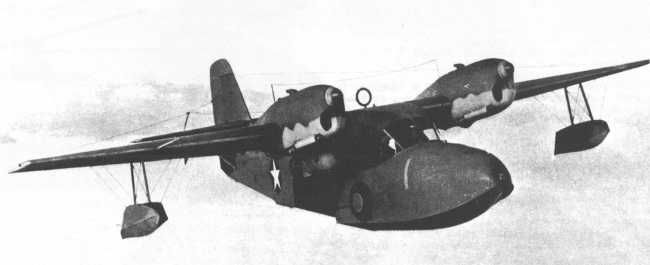
Grumman G44 Widgeon believed to be ZK-CHG in its original J4F-2 configuration as US NAVY BUA # 37726 circa 1944. Photo: Private collection via M.VERLIN
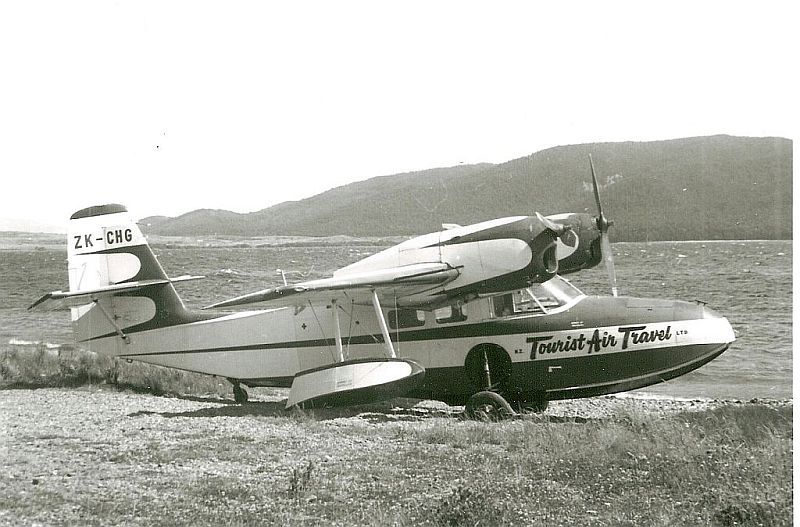
Grumman G44 Widgeon ZK-CHG shortly after entering NZTAT service during 1964. Photo: Mr Widgeon collection
J4F-2/G44 WIDGEON C/N # 1356 ZK-CHG - KNOWN HISTORY
Built as a J4F-2, 1944
Delivered to US NAVY, 1944, BUA 37786
Transferred to US COAST GUARD, 7726 - date unknown
Converted for civil use (G44 WIDGEON) June 26th 1947, N97102
Sold to J.G McDONALD, Ann Arbor, Michigan, USA, July 2nd 1947, N97102
Sold to M.Z Milwaukee, USA, September 20th 1951, N97102
Sold to F.W CUTULLI, Miami, Floeida, USA, May 18th 1952, N97102
Sold to James.L COVERT, Louisville, Kentucky, USA, October 27th 1955, N97102
Sold to J.E SIMON, USA, April 4th 1960, N97102
Sold to Bob STOCKHOLM, Troy, New York, USA, March 19th 1962, N97102
Sold to NZ TOURIST AIR TRAVEL, Auckland, New Zealand, July 3rd 1964, ZK-CHG
Converted to SUPER WIDGEON (260 HP Continenal IO-470-D engines) 1965
Inherited by MOUNT COOK AITRLINES, Auckland, New Zealand, December 31st 1967, ZK-CHG
Withdrawn from service, May 16th, 1975, ZK-CHG
Inherited by SEA BEE AIR, Auckland, New Zealand, October 22nd 1976, ZK-CHG
Sold to Owen HARNISH, Auckland, New Zealand, July 10th 1990, ZK-CHG
Sold to Warren DENHOLM/AVSEPCS LTD, Auckland, New Zealand, 2012, ZK-CHG
CURRENTLY STORED AT ARDMORE AERODROME, SOUTH AUCKLAND, NEW ZEALAND
Built as a civil WIDGEON, 1946, NC86613
Sold to M. PRUYN, April 1946, N86613
Sold to Rafael SANCHEZ, Havana, Cuba, CU-P-346 - date unknown
Other details prior to 1962 - unknown
Sold to Bill DANKO, Opa Locka, Florida, USA, April 5th 1962, N9096R
Sold to NZ TOURIST AIR TRAVEL, Auckland New Zealand, July 26th 1963
Converted to SUPER WIDGEON (260 HP Continenal IO-470-D engines) 1965
Inherited by MOUNT COOK AIRLINES, Auckland New Zealand, December 31st 1967, ZK-CFA
Inherited by SEA BEE AIR, Auckland, New Zealand, October 22nd 1976, ZK-CFA
Transferred to SEA BEE AIR, Funafuti, Tuvalu, March 1980, ZK-CFA
Returned to SEA BEE AIR, Auckland, New Zealand, August 1981, ZK-CFA
Sold to Owen HARNISH/VINTAGE & AQUATIC AIRWAYS, Auckland, New Zealand, August 1994, ZK-CFA
Leased to Grant HARNISH/SALT AIR, Paihia, Bay Of Islands, New Zealand, ZK-CFA - date unknown
WITHDRAWN FROM SERVICE AND STORED AT PAIHIA, BAY OF ISLANDS, NEW ZEALAND, 2000

Grumman G44 Widgeon believed to be ZK-CHG in its original J4F-2 configuration as US NAVY BUA # 37726 circa 1944. Photo: Private collection via M.VERLIN

Grumman G44 Widgeon ZK-CHG shortly after entering NZTAT service during 1964. Photo: Mr Widgeon collection
J4F-2/G44 WIDGEON C/N # 1356 ZK-CHG - KNOWN HISTORY
Built as a J4F-2, 1944
Delivered to US NAVY, 1944, BUA 37786
Transferred to US COAST GUARD, 7726 - date unknown
Converted for civil use (G44 WIDGEON) June 26th 1947, N97102
Sold to J.G McDONALD, Ann Arbor, Michigan, USA, July 2nd 1947, N97102
Sold to M.Z Milwaukee, USA, September 20th 1951, N97102
Sold to F.W CUTULLI, Miami, Floeida, USA, May 18th 1952, N97102
Sold to James.L COVERT, Louisville, Kentucky, USA, October 27th 1955, N97102
Sold to J.E SIMON, USA, April 4th 1960, N97102
Sold to Bob STOCKHOLM, Troy, New York, USA, March 19th 1962, N97102
Sold to NZ TOURIST AIR TRAVEL, Auckland, New Zealand, July 3rd 1964, ZK-CHG
Converted to SUPER WIDGEON (260 HP Continenal IO-470-D engines) 1965
Inherited by MOUNT COOK AITRLINES, Auckland, New Zealand, December 31st 1967, ZK-CHG
Withdrawn from service, May 16th, 1975, ZK-CHG
Inherited by SEA BEE AIR, Auckland, New Zealand, October 22nd 1976, ZK-CHG
Sold to Owen HARNISH, Auckland, New Zealand, July 10th 1990, ZK-CHG
Sold to Warren DENHOLM/AVSEPCS LTD, Auckland, New Zealand, 2012, ZK-CHG
CURRENTLY STORED AT ARDMORE AERODROME, SOUTH AUCKLAND, NEW ZEALAND
This 1960's boom period also saw NZ TOURIST AIR TRAVEL embark on a powerplant conversion program (undertaken by TEAL) for its entire GRUMMAN WIDGEON fleet .... replacing the aircrafts original, and underpowered, 200 HP 2-bladed-prop Ranger L-440C-5 engines with superior 260 HP Continenal IO-470-D engines with 2-bladed variable-pitch-props which promoted a significant performance boost .... and upgraded each of these aircraft to "GRUMMAN SUPER WIDGEON" specification.







NZTAT Grumman G44 and G44-A Widgeon aircraft ZK-AVM, ZK-BAY, ZK-CFA, and ZK-CHG after TEAL conversion to Continenal IO-470-D engines circa 1965. Photos: Private collection/NZ CIVAIR (ZK-AVM # 1), Steve LOWE/3RD LEVEL NZ collection (ZK-AVM # 2), Private colection (ZK-BAY), Trevor PENMAN (ZK-CFA), Mr WIDGEON (ZK-CHG # 1), D WHITE/3RD LEVEL NZ collection (ZK-CHG # 2)
GRUMMAN G44/A WIDGEON TECHNICAL SPECIFICATIONS - MODIFIED/UPGRADED CIVIL CONFIGURATION
Length = 31fT i IN
Wing Span = 40 FT
Power Plant = 2X Continental IO-470-D engines rated at 260 HP
Weight = 5,100 LBS MGTOW
PAX Capacity = 4-5 (plus 1X pilot)
Range = 1,000 NM
Speed = 150 KTS (max) - 130 KTS (typical cruise)
Type = Light amphibious transport with fixed/non-retractable wingtip floats and engine/prop modifications
During this period 2 aircraft were also discovered to require urgent keel modifications in light of their intermittent and disttressing waterlooping habit .... which had resulted in a number of previous incidents/accidents and subsequent aircraft damage. All GRUMMAN WIDGEON aircraft in existence .... and well before the period of their entry to New Zealand service .... were supposed to have undergone a mandatory keel modification. This US aviation directive was the result of several waterlooping accidents (a loss of directional control/stability) overseas and required the removal of some 6 inches of keel/step from the lower hull of each individual aircraft. Completly undetected by the NEW ZEALAND CIVIL AVIATION AUTHORITY at the time of their acquisition .... NZ TOURIST AIR TRAVEL, had, unwittingly, and quite coincidentally, acquired 2 GRUMMAN WIDGEON's that were prone to waterloop when landing on flat calm sea conditions for thei lack of having been modified .... and which turned out to be the completly unmodified ZK-BGQ .... along with the only partially modified ZK-BPX. Following the chance discovery of this major discrepency (during captain LADD's May/June 1961 tour of the USA whilst in search of a suitable GRUMMAN WIDGEON replacement) and their subsequent modification, both of these aircraft then performed flawlessly throughout the remainder of their New Zealand service.
In the case of ZK-BGQ (ex F-OAGX) .... in particular .... it was this aircrafts previous history of waterlooping (the cause of which was not detected by French aviation authorities either) that had resulted in its being involved in numerous incidents/accidents throughout the islands of French Polynesia (which was also directly attributable to NZ TOURIST AIR TRAVEL's own, occasional, difficulties with this same WIDGEON) and had prompted RAI, of Tahiti, to withdraw it from service, and then "gladly" sell/"get rid of" the aircraft during 1954 .... having already replaced it with a GRUMMAN MALLARD (F-OAII) during 1953.
It was also during Fred LADD's 1961 tour of the USA that American aircraft brokers had first endeavoured to interest NZ TOURIST AIR TRAVEL into acquiring GRUMMAN GOOSE aircraft .... as a WIDGEoN replacement. This particular persuasion was resisted by the airline on the grounds that the capacity of the GOOSE well exceeded the airlines, then, current needs.
During its 12 year operational history NZ TOURIST AIR TRAVEL earned the distinction of transporting numorous famous personalities/VIP celebrities throughout New Zealand, but, the event which became the airlines very finest hour occurred with the 1963 royal tour of New Zealand by HM Queen Elizabeth 2nd and HRH Prince Phillip/The Duke Of Edinburgh. Organisers of the royal tour paid the airline a tremendous honour when it was selected to become the official transport for HRH Prince Phillip, on the Nelson, Anakiwa, and Blenheim sector of this royal tour. In anticipation of this regal service .... GRUMMAN WIDGEON ZK-BPX in company with ZK-BGQ as a standby aircraft .... were lavishly reupholstered and overhauled at government expence. This royal flight was flown by Captain LADD on February 13th 1963 .... and which also became the Duke Of Edinburgh's first ever flight on an amphibious aircraft. Further honour was bestowed upon captain LADD during 1963 when he was nominated for, and then awarded, the MBE for his services to New Zealand and Pacific aviation .... and which was presented to him, by HRH Queen Elizabeth 2nd, on February 12th 1963, at a Wellington based ceremony, during this same royal tour.
NZ TOURIST AIR TRAVEL's royal pride of February 13th 1963 was also marred by a minor accident which involved GRUMMAN WIDGEON ZK-AVM. A landing gear defect enroute between the Bay Of Islands and Auckland prevented this aircraft from making its normal water-landing at Mechanics Bay. This forced its diversion to Whenuapai Airport and an emergency ground-landing at North Aucklands Whenuapai Airport which resulted in minor damage to the aircraft, after a partial main-gear collapse, but, without injury to either of the 2 POB. This incidentalso resulted in the urgent recall, back to Auckland, of both "Royal WIDGEON's" in order to fascilitate the airlines services over the follwing days.
On January 15th 1964 GRUMMAN WIDGEON ZK-BPX was damaged as the result of a non-fatal gear-down water-landing accident at Port Pegasus, Stewart Island.
Though this aircraft was deemed repairable, it was eventually written-off during the subsequent recovery effort and through the mishandling of the operation by the salvage company concerned. Its remains were stored at the MUSEUM OF TRANSPORT AND TECHNOLOGY, in Auckland, for a ptime, but, over time, these were also progressively canibalized of most useful parts by NZ TOURIST AIR TRAVEL, MOUNT COOK AIRLINES, and SEA BEE AIR. Whatever now remains of ZK-BPX is still believed to be held in storage somewhere within the Auckland area. This particular aircraft was also the only member of the New Zealand operated GRUMMAN WIDGEON fleet that never made conversion to Continental IO-470-D engines and "SUPER WIDGEON" status .... retaining its original Ranger engines throughut its entire, short, New Zealand service.
On December 11th 1964 NZ TOURIST AIR TRAVEL was presented the Order Of Saint John .... awarded by the NEW ZEALAND ST.JOHNS AMBULANCE SERVICE in recognition of the airlines emergency/medical evacuation services/assistance among the island communities of the Hauraki Gulf. Even today .... much is owed by so many to so few .... through countless lives being having been saved by this particular service.
And on April 8tn 1965 Fred LADD was presented the International Brackley Memorial Trophey .... awarded by the GUILD OF AIR PILOTS & NAVIGATORS, at a UK based ceremony .... and also in recognition of his/the airlines humanitarian services throughout the islands of the Hauraki Gulf .... much of which were often undertaken during adverse weather or under, otherwise, extremly difficult operating conditions.
Never one to miss any opportunity of gaining good publicity for NZTAT .... Captain LADD seized upon the first day of commercial operations at Auckland International Airport to make history on November 24th 1965 .... effectively robbing the mainstream scheduled operators of some prestige .... by operating what became "the first ever commercial arrival" at the new airport (the airport was not officially opened until January 29th 1966 .... and which was celebrated with a 3-day air pageant until January 31st 1966). An NZTAT GRUMMAN WIDGEON was chartered by the Travellers Information Service in order to perform this service .... landing at Auckland International Airport at 07:40 AM .... ahead of an AIR NEW ZEALAND/TEAL L188 ELECTRA service from Nandi/Fiji that same morning and a QANTAS AIRWAYS B707-138B service from Sydney/Australia later during day. Mabel LADD (the wife of Captain Fred LADD's) paid "One Shilling" to become "the very first fare-paying PAX" to ever step from an aircraft at Auckland International Airport .... to the disillusion of both AIR NEW ZEALAND/TEAL and NZNAC officials. Always "the showman" .... and after a brief tour of the new airports facilties .... Fred LADD then astonished assembled airline representatives by commenting ....
You can't do this with your PAX can you ![/b]
.... and upon this remark he then promptly lifted his wife over his shoulder and carried her back to the waiting GRUMMAN WIDGEON prior departing for the airlines Mechanics Bay base at downtown Auckland.
Captain LADD eventually retired from NZ TOURIST AIR TRAVEL on March 31st 1967 .... the day upon which he also flew GRUMMAN WIDGEON ZK-BGQ at low altitude, down the length of the Waitemata Harbour, and straight under the Auckland Harbour Bridge, as his final parting salute to the city of Auckland as well as a private celebration of his own 12 years of service to the Hauraki Gulf and the amphibious airline he had been instrumental in founding. This particular stunt was performed much to the horror of his unsuspecting wife, and 2 PAX/guests, whom accompanied him aboard the aircraft during this final flight. "UNDER THE BRIDGE" .... his wife exclaimed once airborne and upon sudden realisation of his intentions. "YOU'LL LOSE YOUR LICENCE .... YOU'LL LOSE EVERYTHING .... YOU CAN'T GO UNDER THE BRIDGE" .... she protested further. Taking photographs, himself, as the aircraft slipped beneath the bridges main span she once again chastized him immediately afterward .... "NOT ONLY WAS IT UNDER THE BRIDGE .... BUT .... IT WAS NO HANDS TOO" .... she retorted.

NZTAT Grumman G44 Widgeon ZK-BAY at T/O from the Waitemata Harbour and passing the Auckland harbour bridge. Photo: Gladys GOODALL/3RD LEVEL NZ collection.
This particular, and now infamous, feat resulted in Captain LADD being prosecuted under Cvil Aviation safety regulations and his summons to court .... but .... which also concluded in his then being "discharged without conviction" under terms of "leniency" provided within the law/act .... albeit with a severe reprimand (told what a "bad lad"/LADD I'd been and warned to never, ever, repeat such a violation in the future" .... according to captain LADD) by the presiding magistrate, Judge W.J.MEADE, and also then having court costs awarded against him.
Fred LADD went on to colourfully persue his, then, growing interest in both rotary wing and other tourist related aviation ventures within the Rotorua and Taupo regions of New Zealands central North Island .... particularly under the GUYSERLAND AIRWAYS/FRED LADD's VOLCANIC WONDERFLITES, and AIR CENTRAL banners, followed by his later interest in recreational gliding .... the latter of which also resulted in his coining of what then became one of his final famous "LADDerisms" ....
"A shower of grass .... And I'm on my arse"[/b]
.... as he, himself, later described.
Captain Fred LADD passed away, of Cancer, on January 22nd 1989, at the age of 80 years .... having logged some 21,109 hours total flying time. His passing marked the end of another era in New Zealand aviation history, but, it by no means represented the final chapter in the classic New Zealand GRUMMAN amphibian story.
Mark C
AKL/NZ
ADDENDA ....
Special thanks to Father Steve LOWE/"3RD LEVEL NEW ZEALAND" for his kind co-operation in regard to my use of a number of early aircraft images featured within "PART 1" of this article. I recommend that anyone interested in learning more about some of New Zealands past and present 3rd level airlines/operators should take time to familiarise themselves with the following fascinating website ....
3RD LEVEL NEW ZEALAND
3rdlevelnz.blogspot.co.nz/
PLEASE NOTE: I have endeavoured to credit all early photos (those not taken by me personally) to their known/rightful photographers .... or source of supply. Contact me directly in cases of any errors or omissions and I will do my utmost to ensure correct/propper accreditation if anything else is amiss.



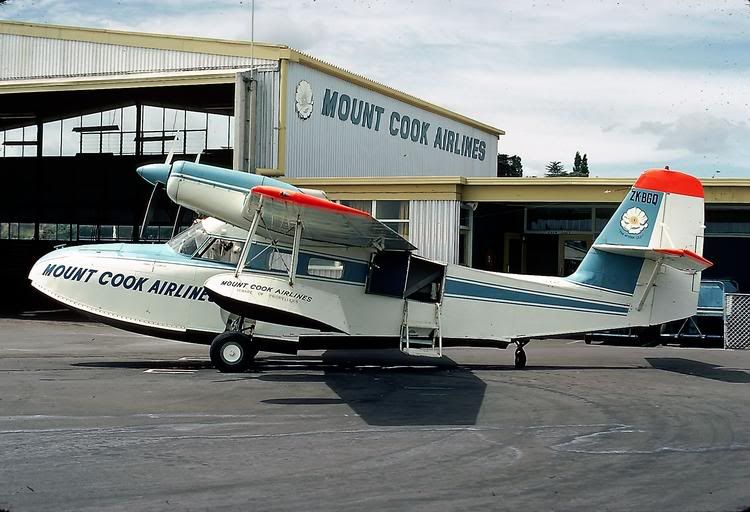

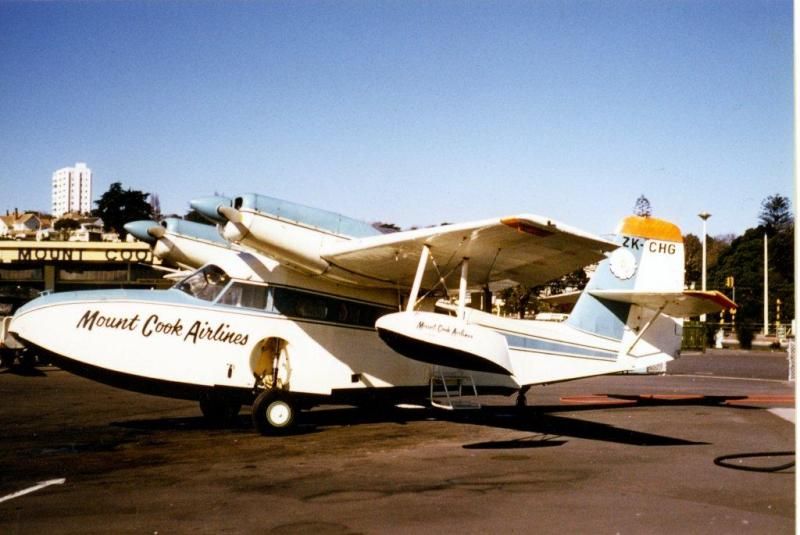
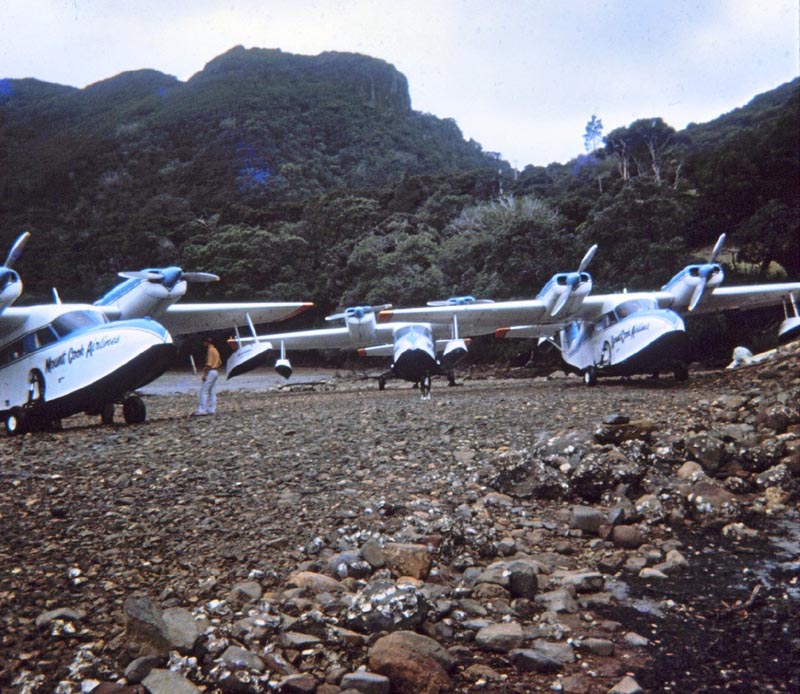




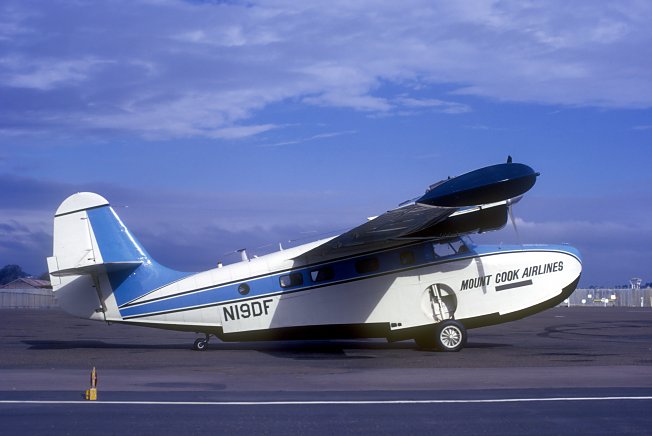





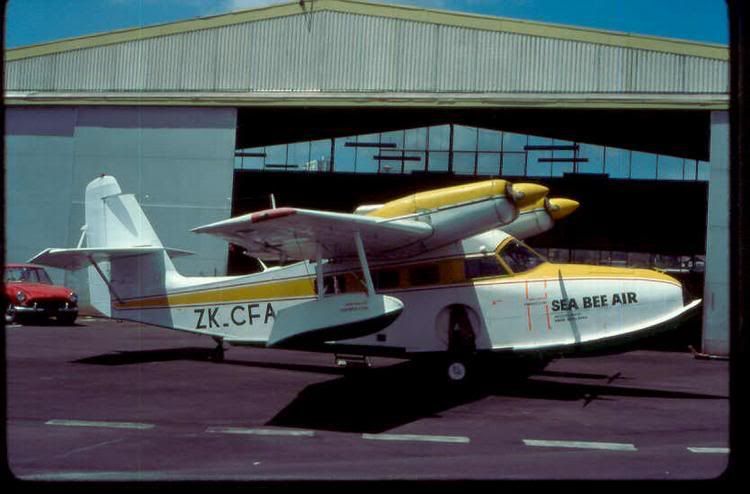



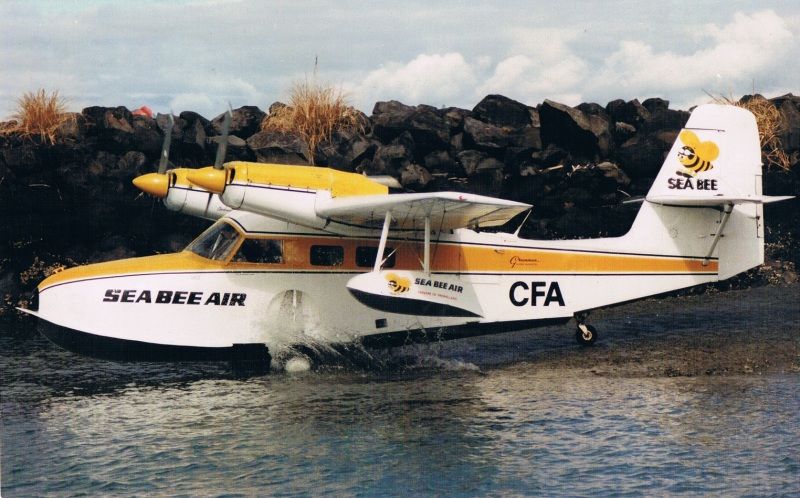


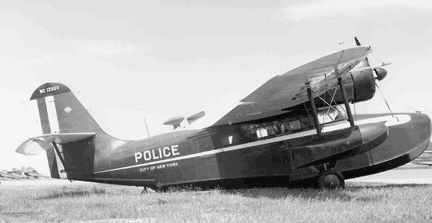
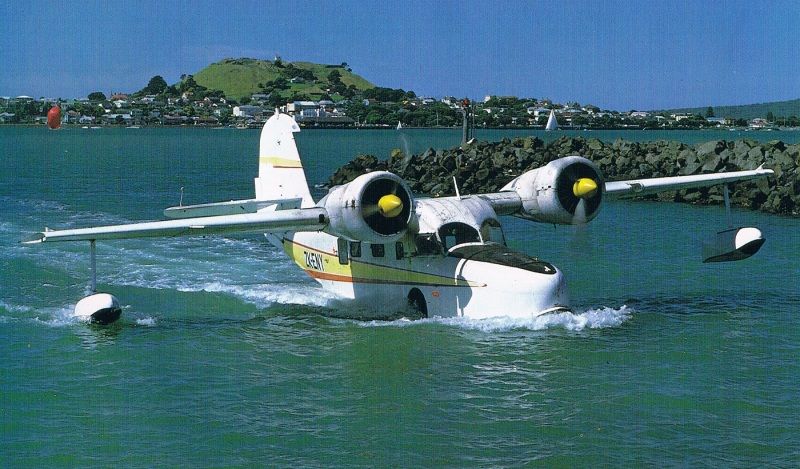


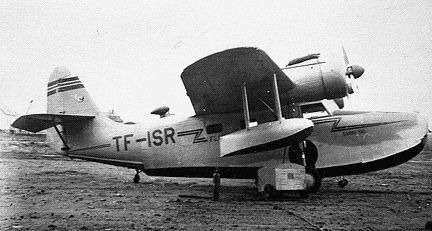

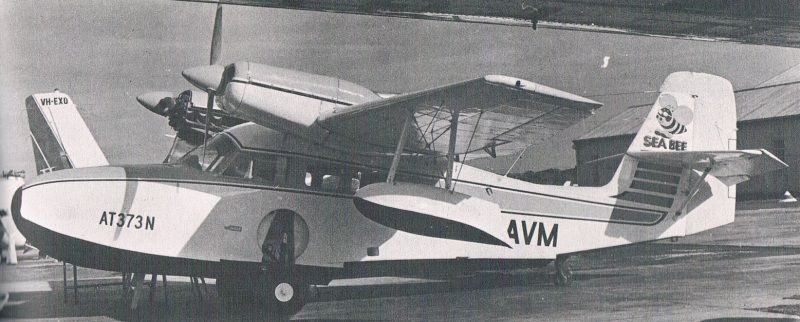
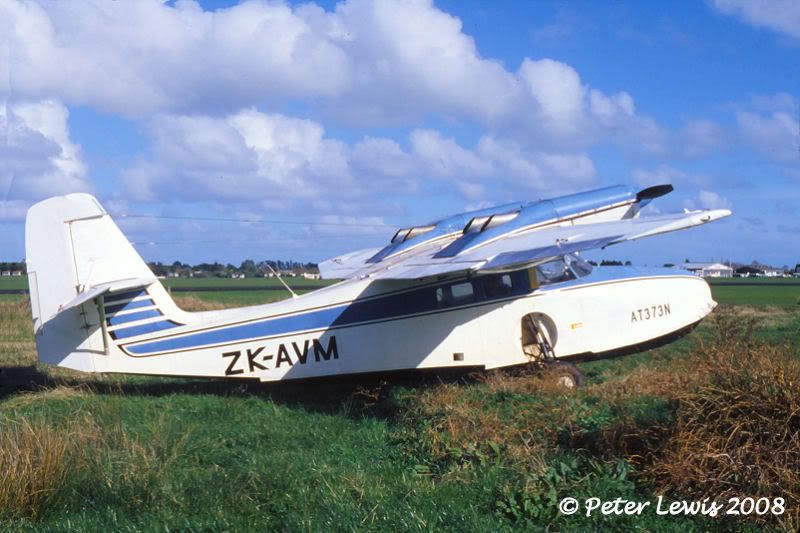
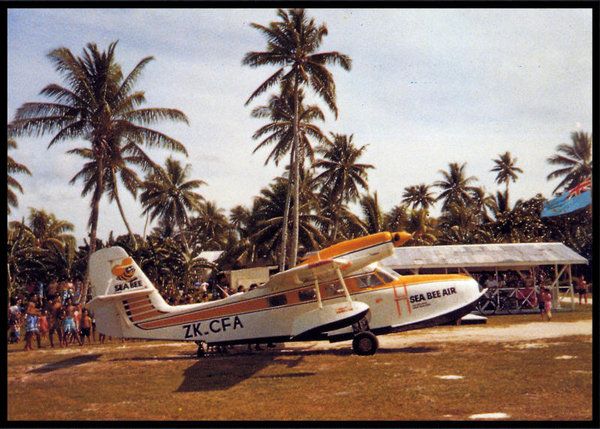

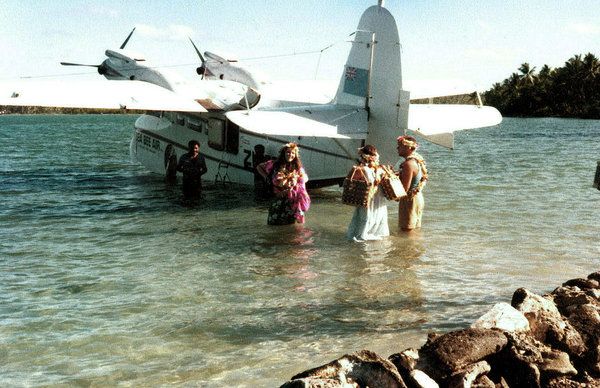
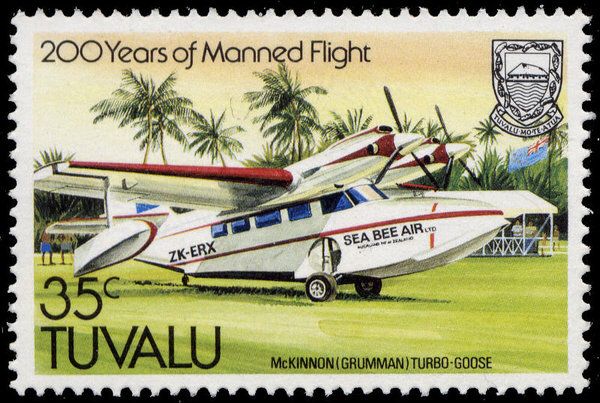
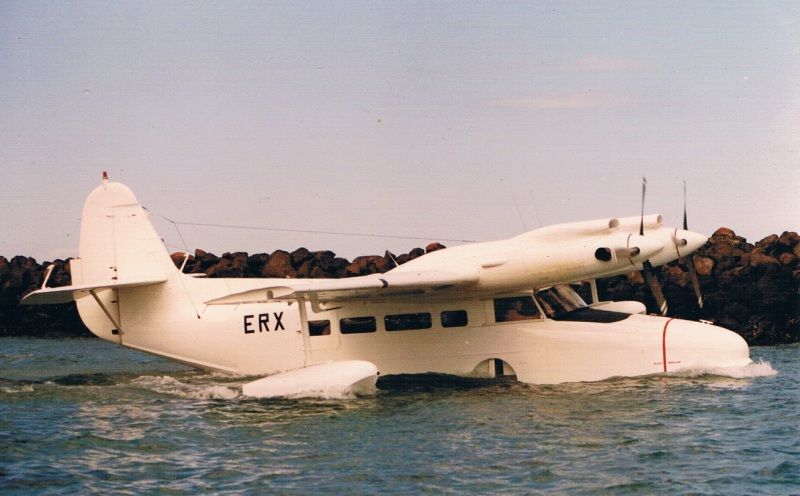
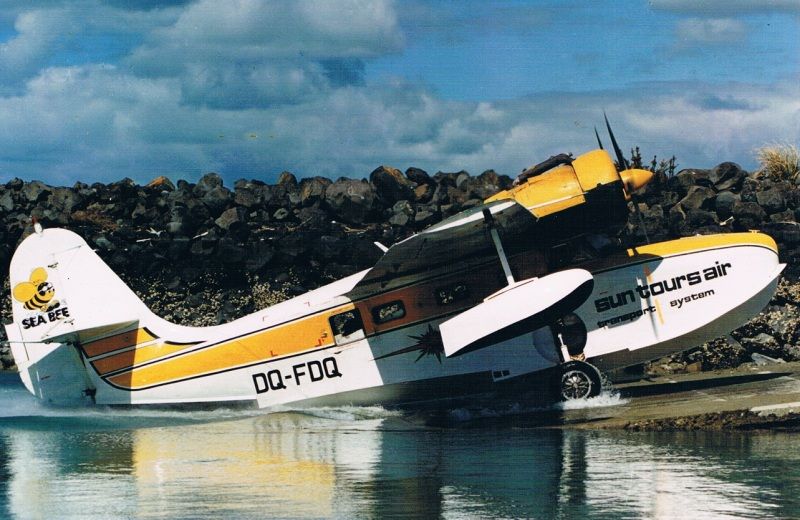
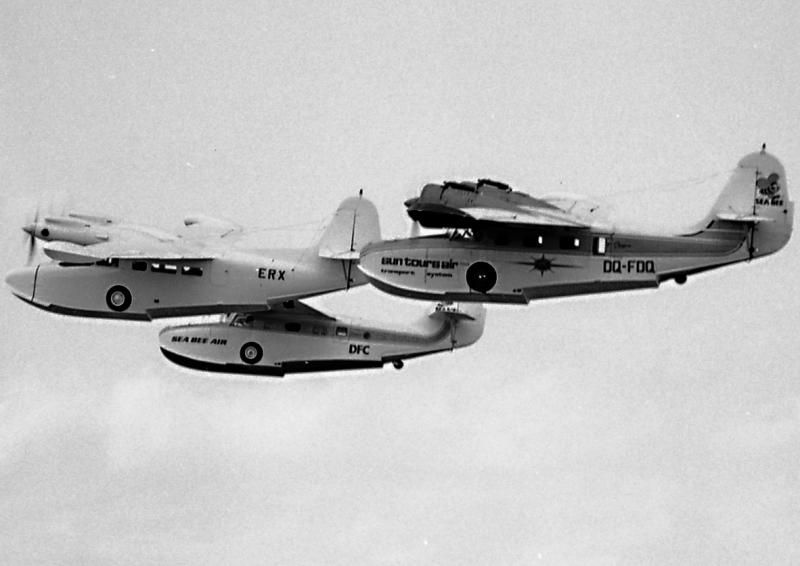
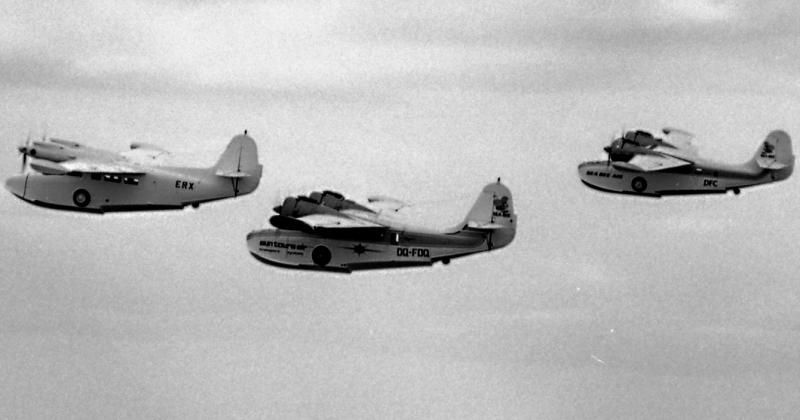
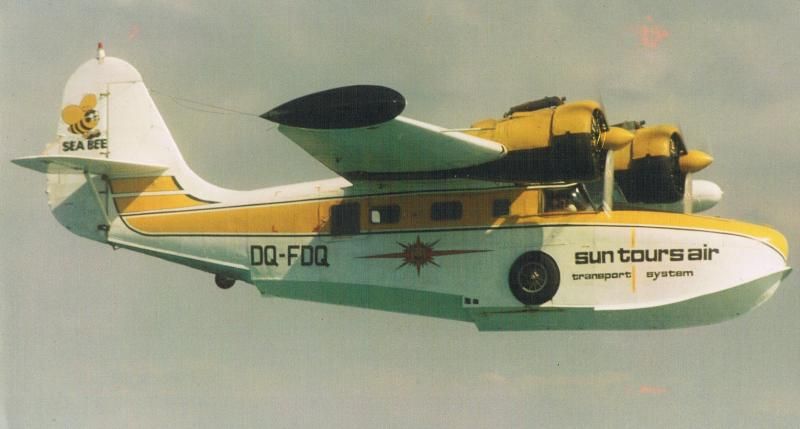
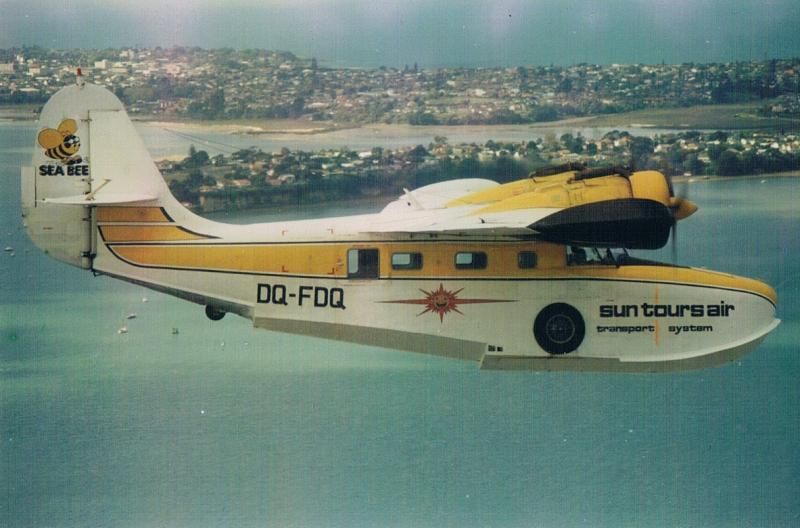
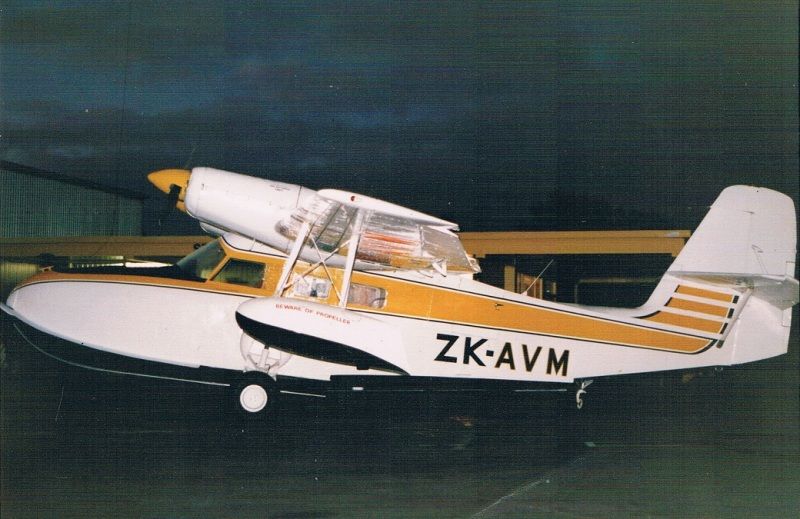
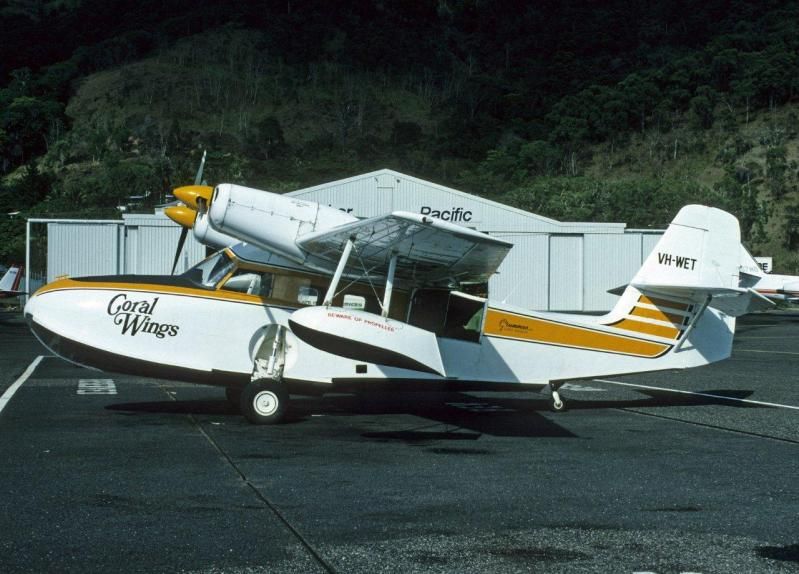
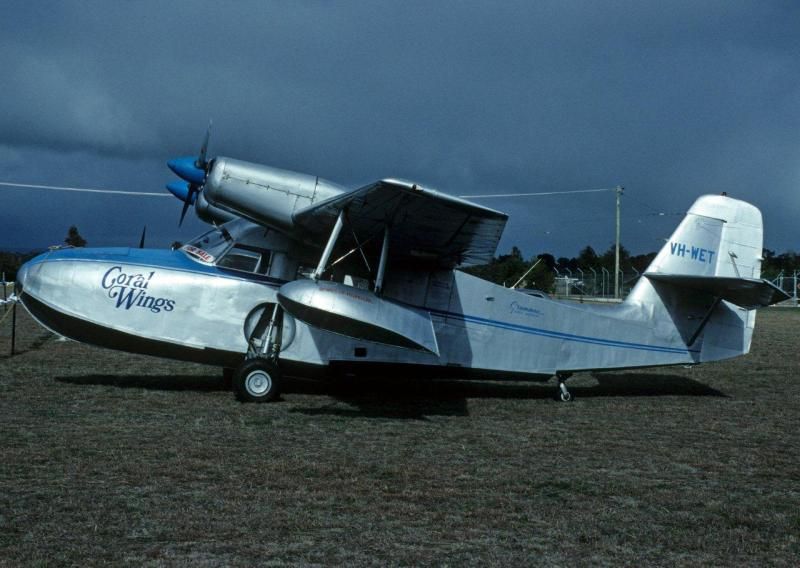
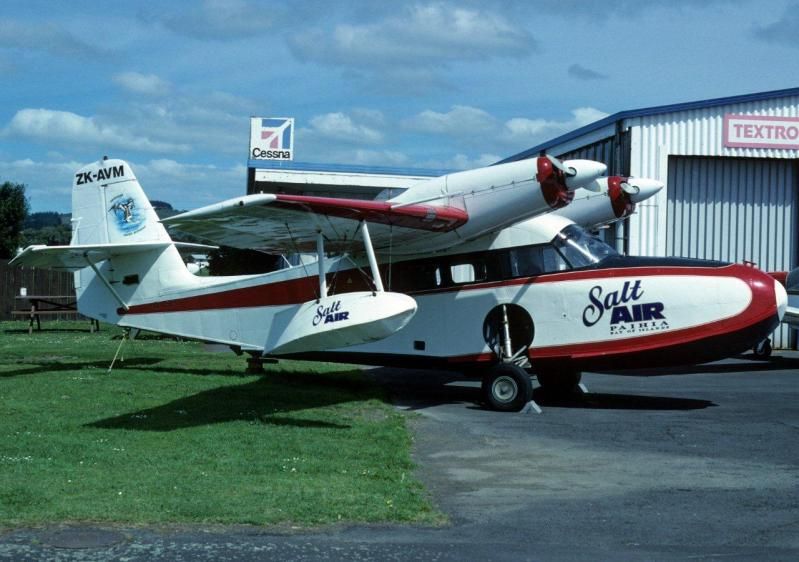

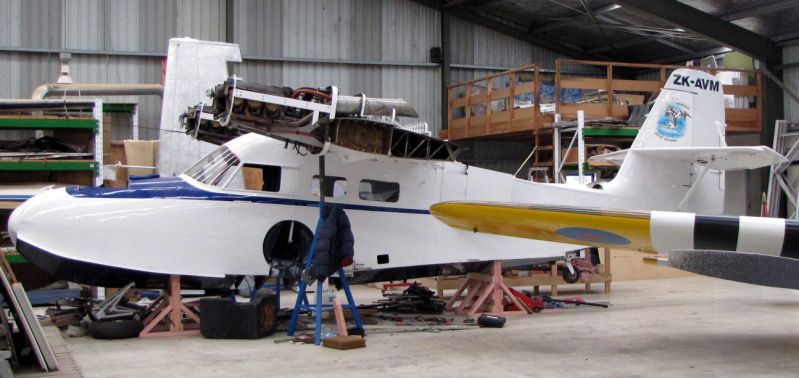
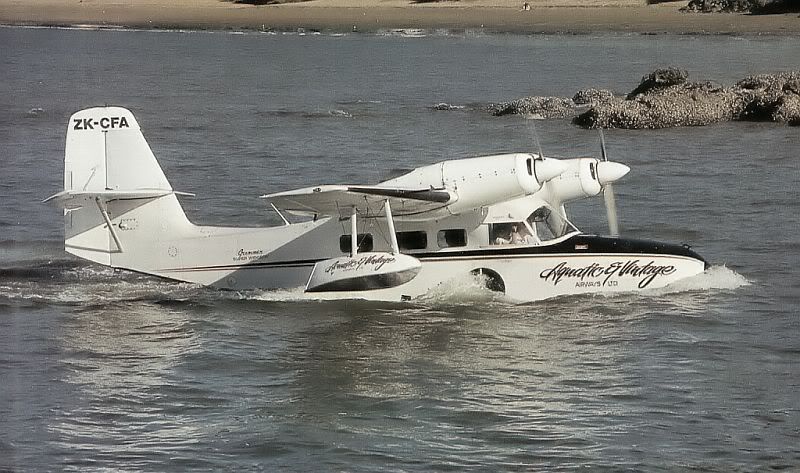


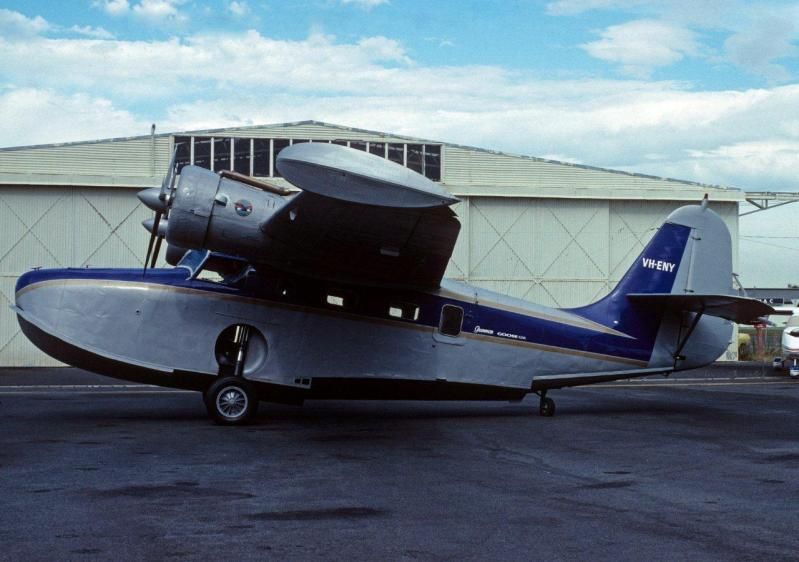



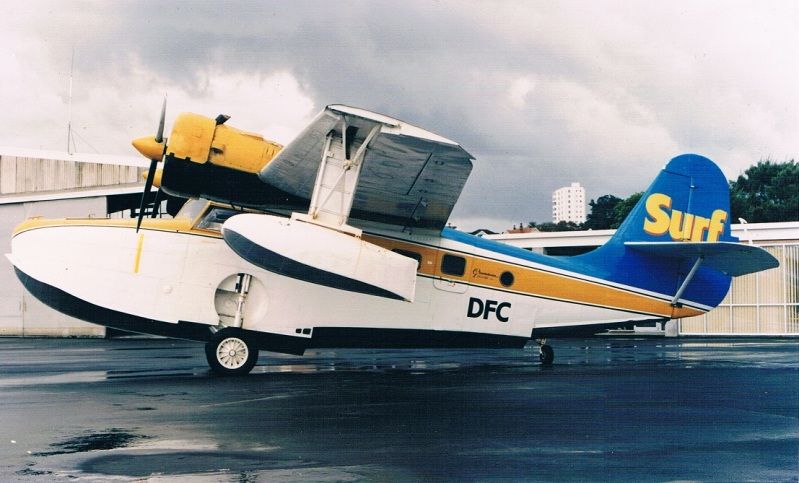
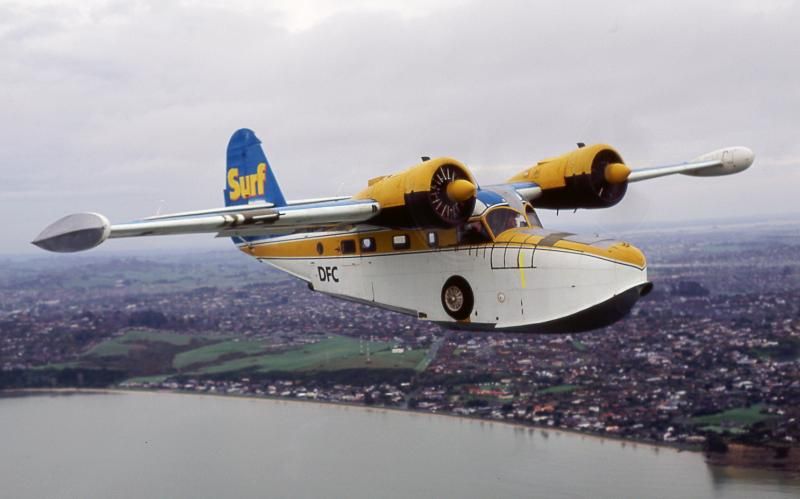
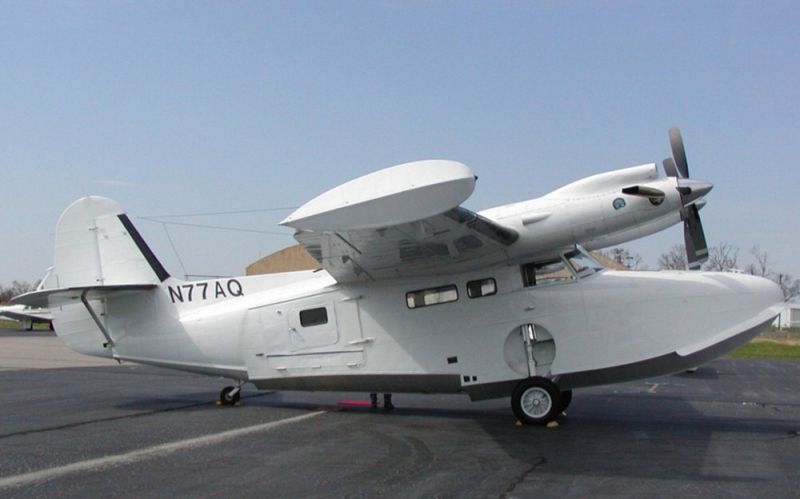
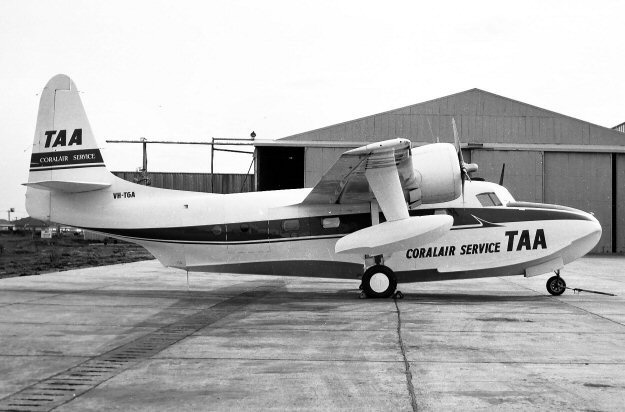








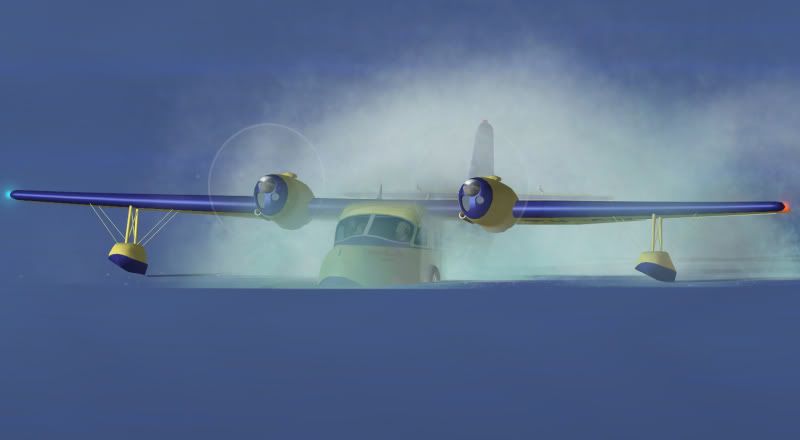
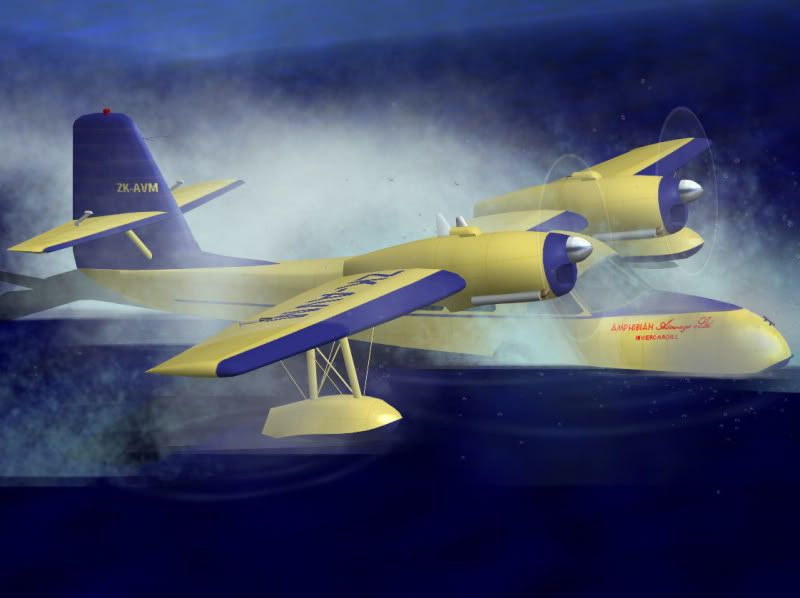
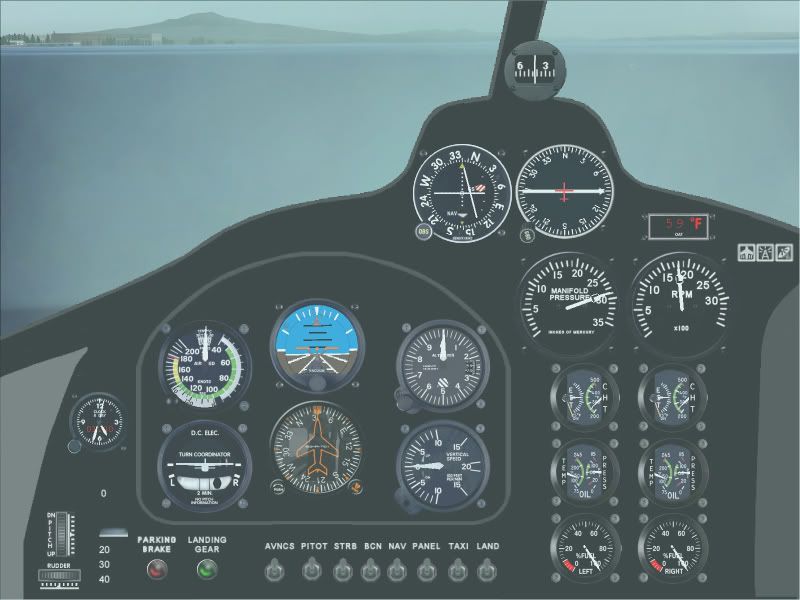

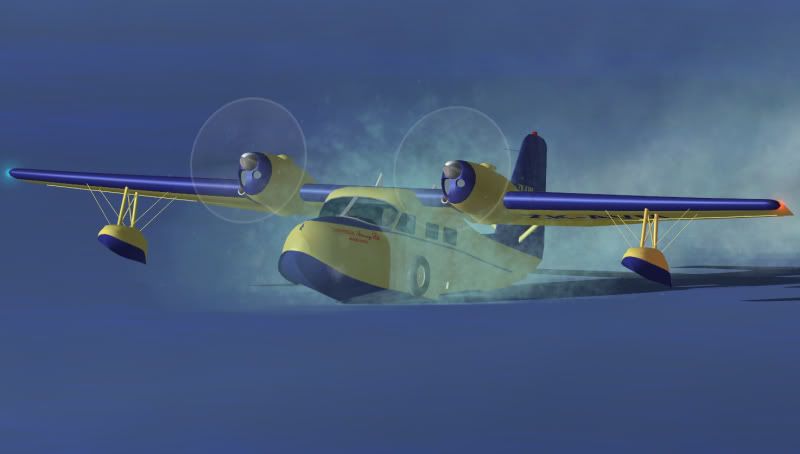
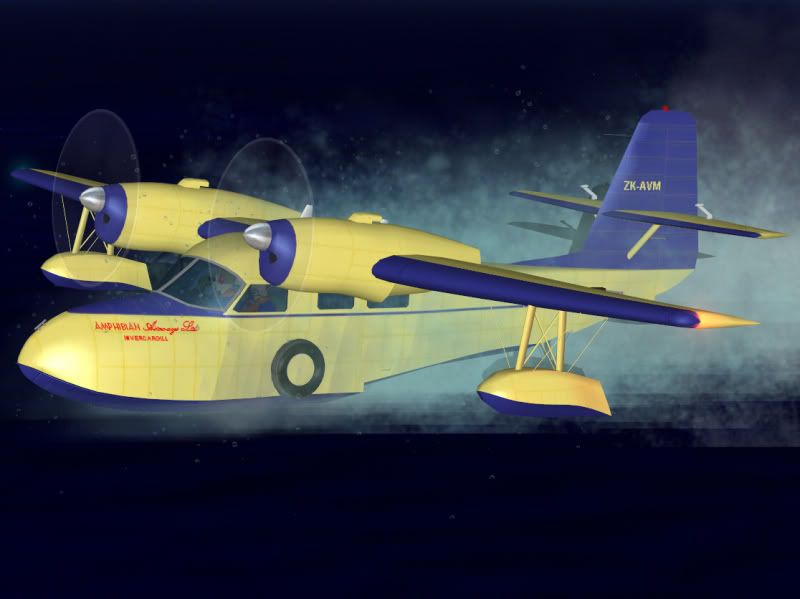
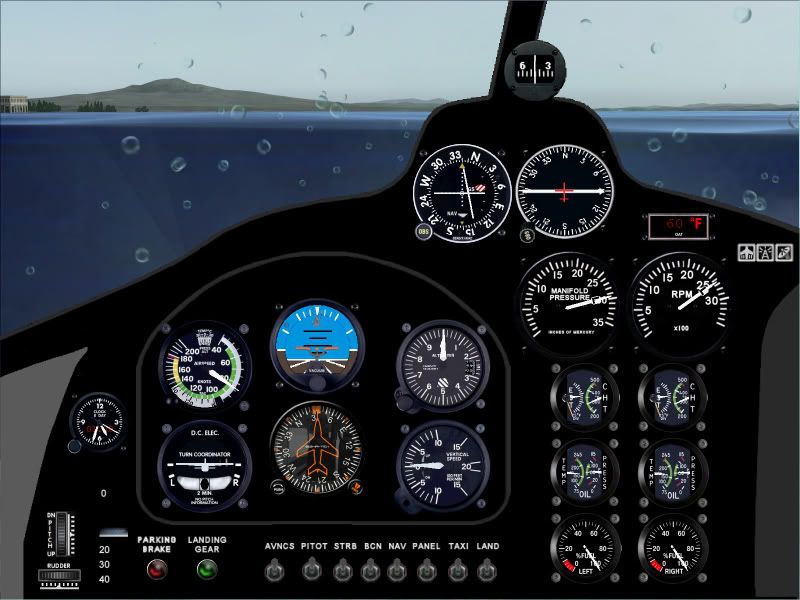

 ;D
;D
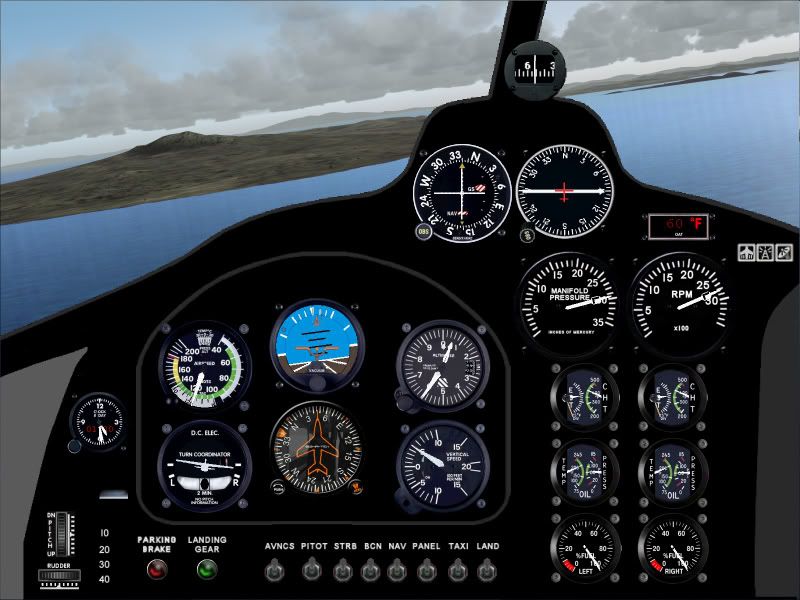

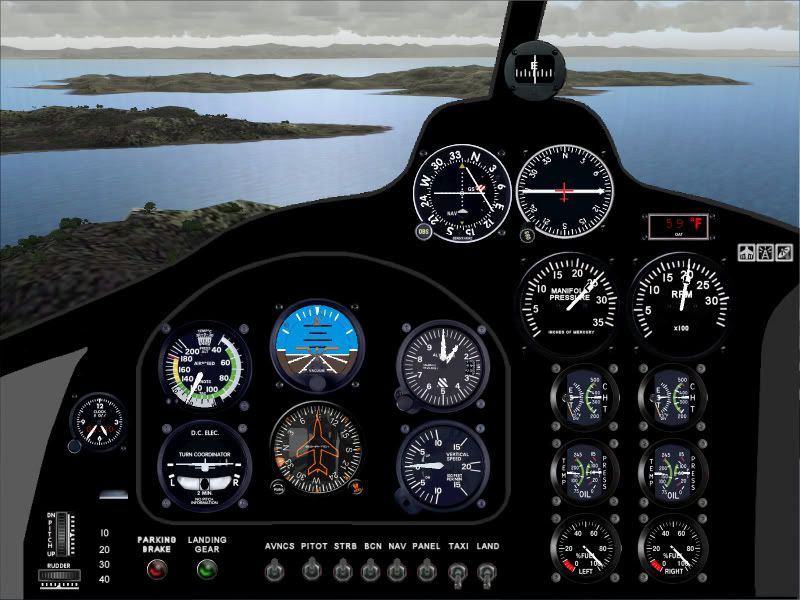
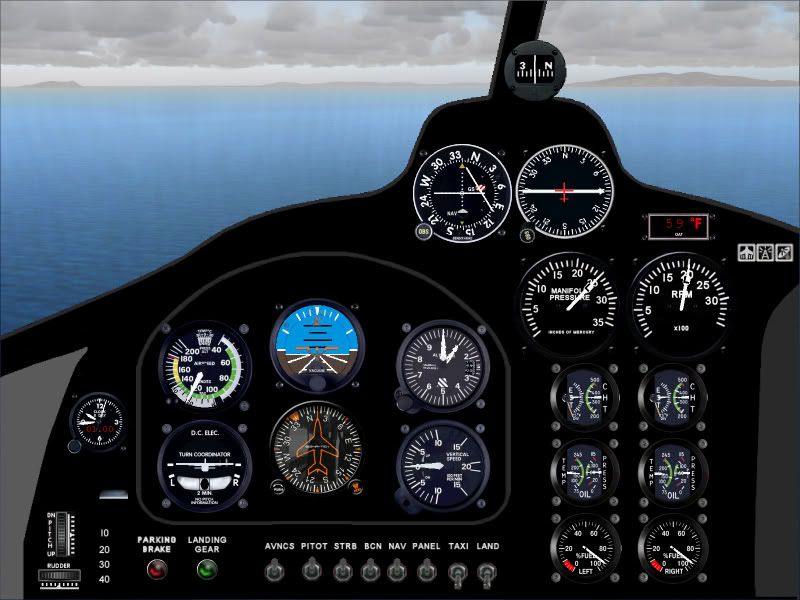
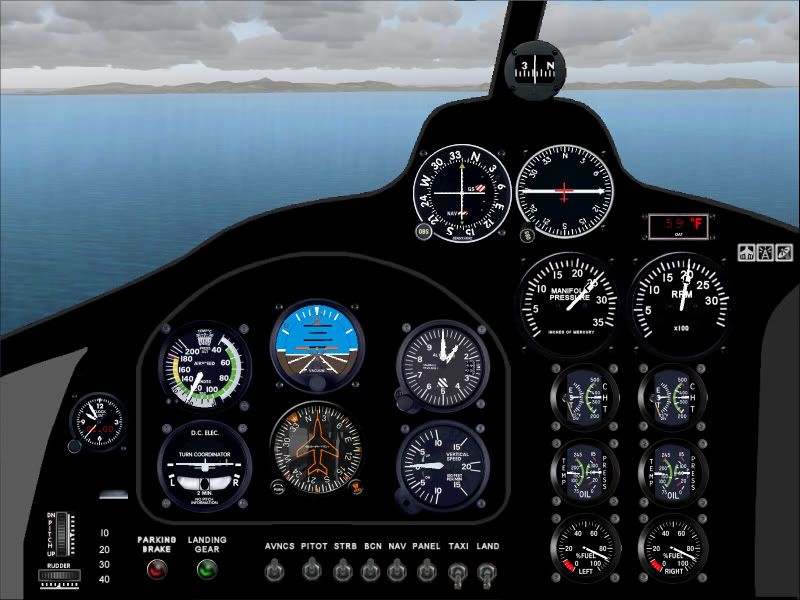
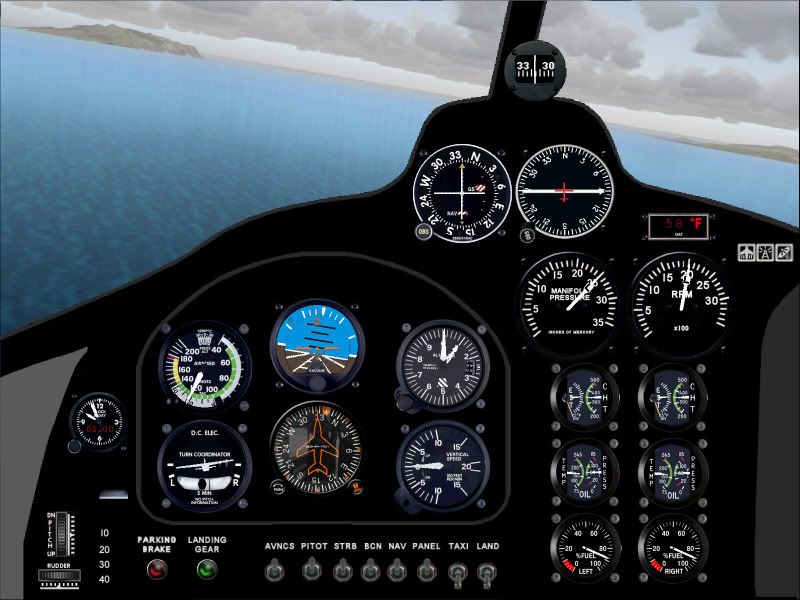
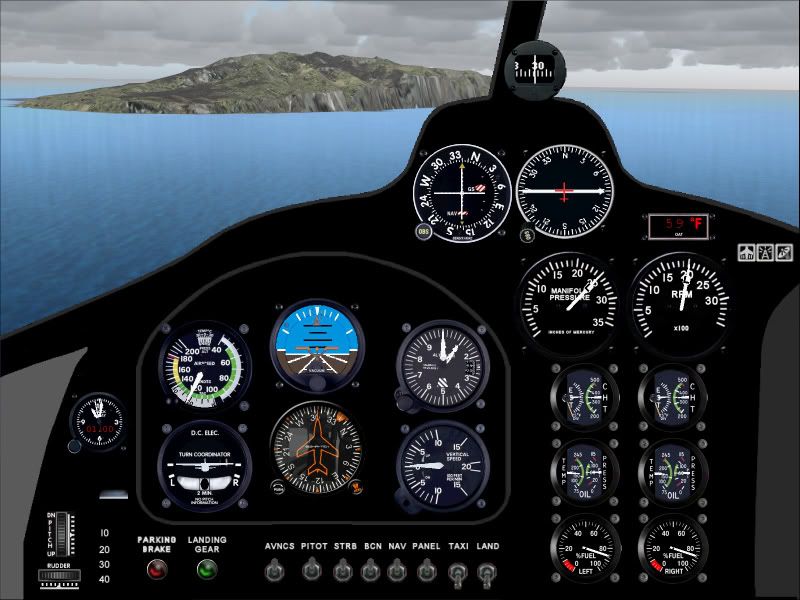

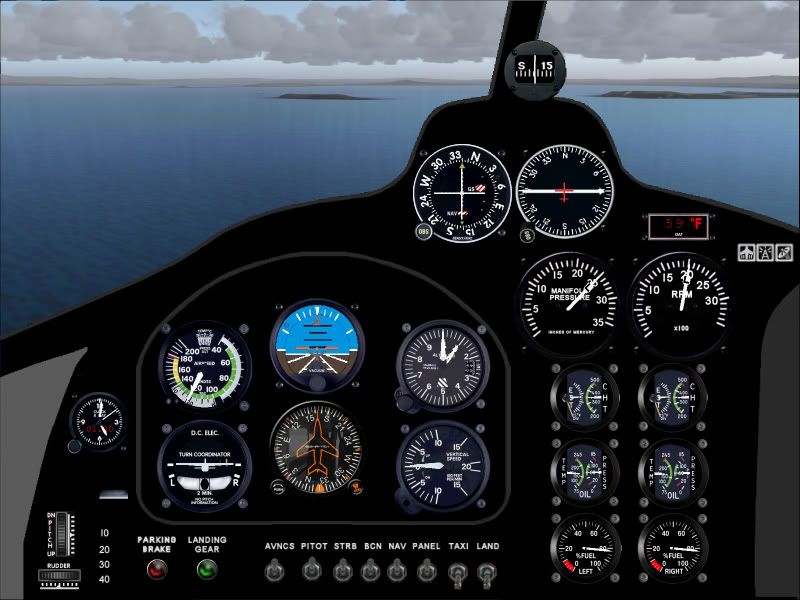


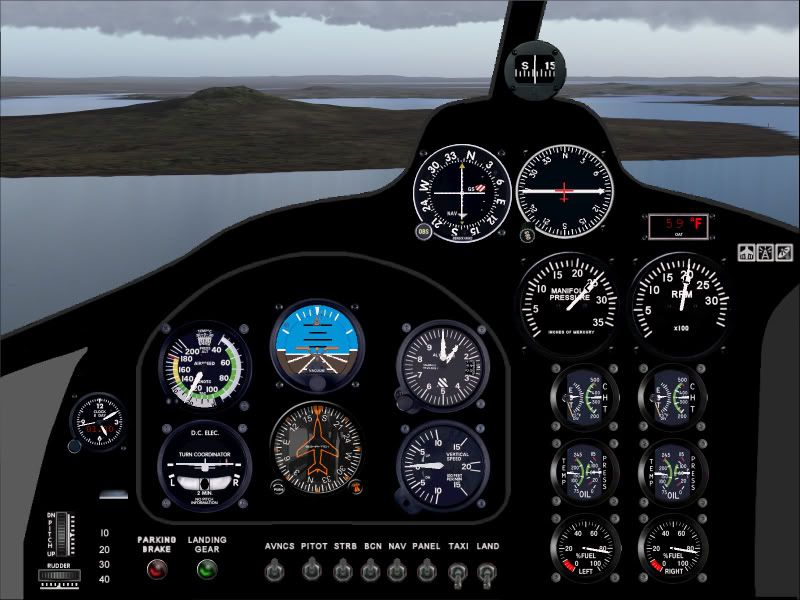
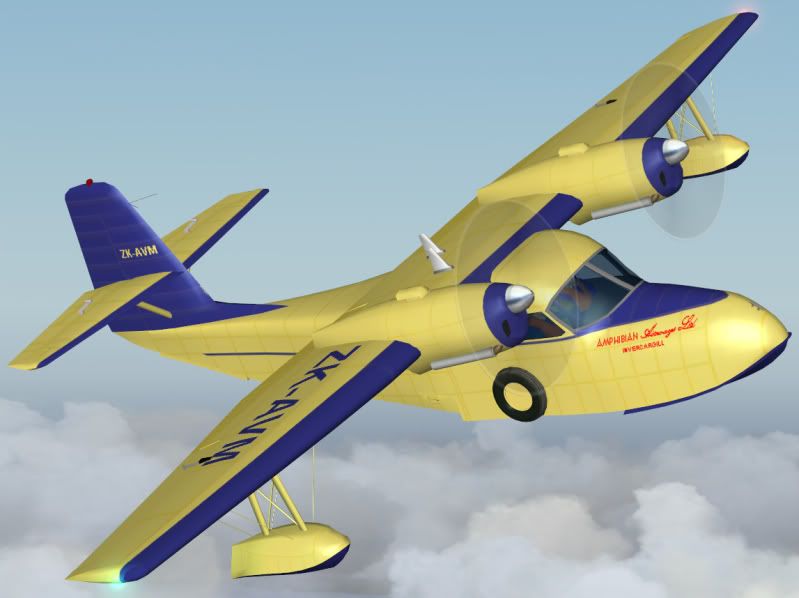

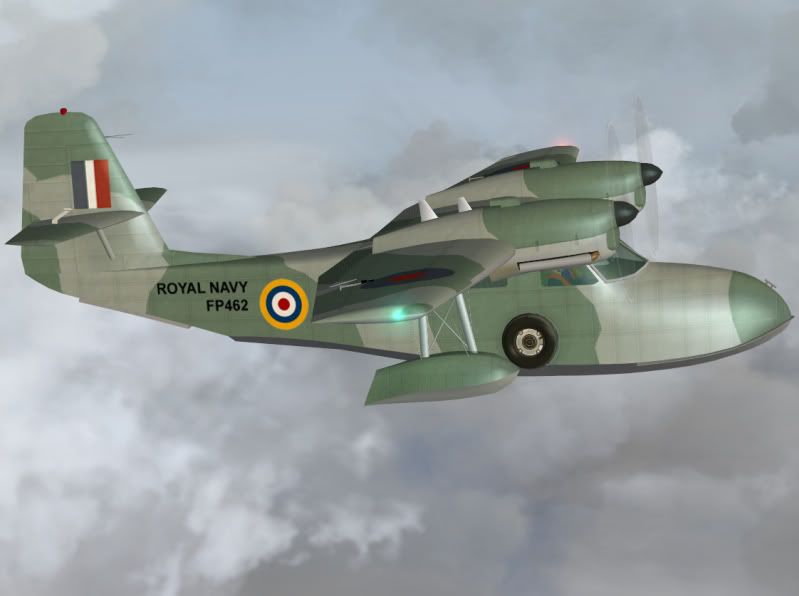
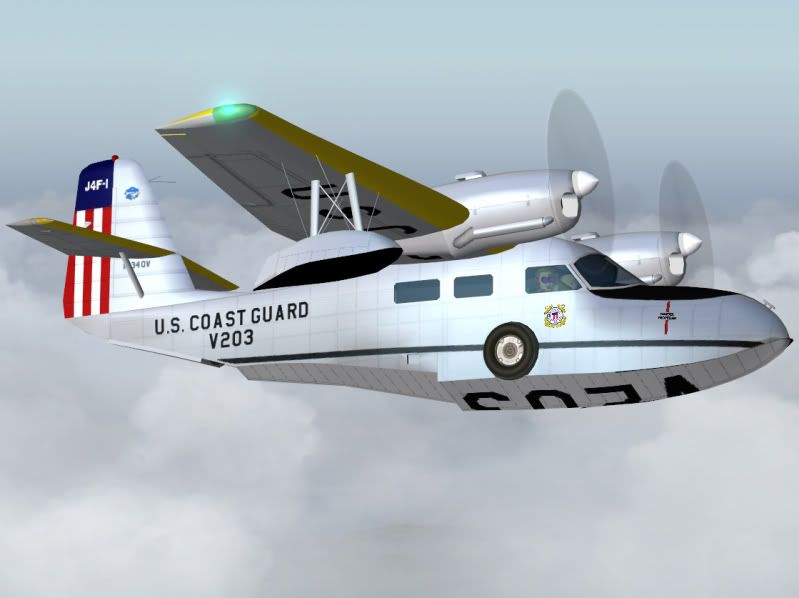
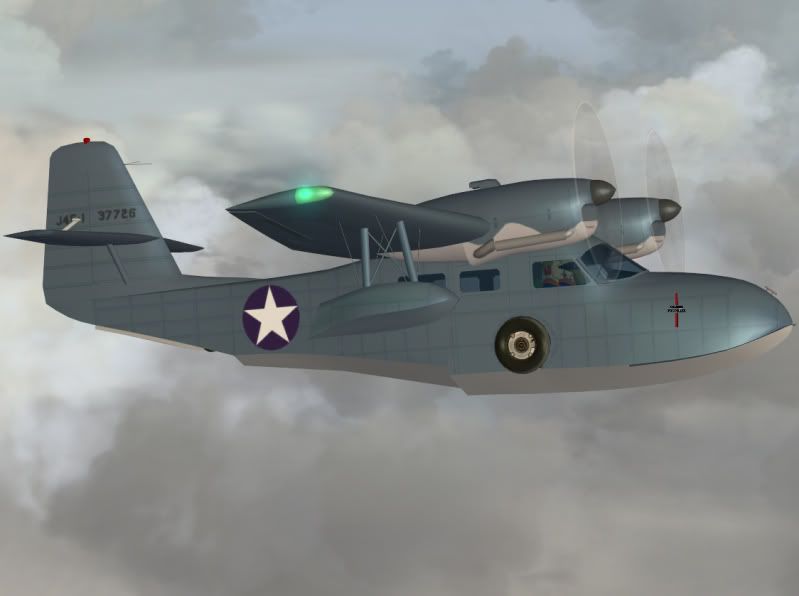

 .... from your container ship trip to AKL during the late 1990's
.... from your container ship trip to AKL during the late 1990's 
